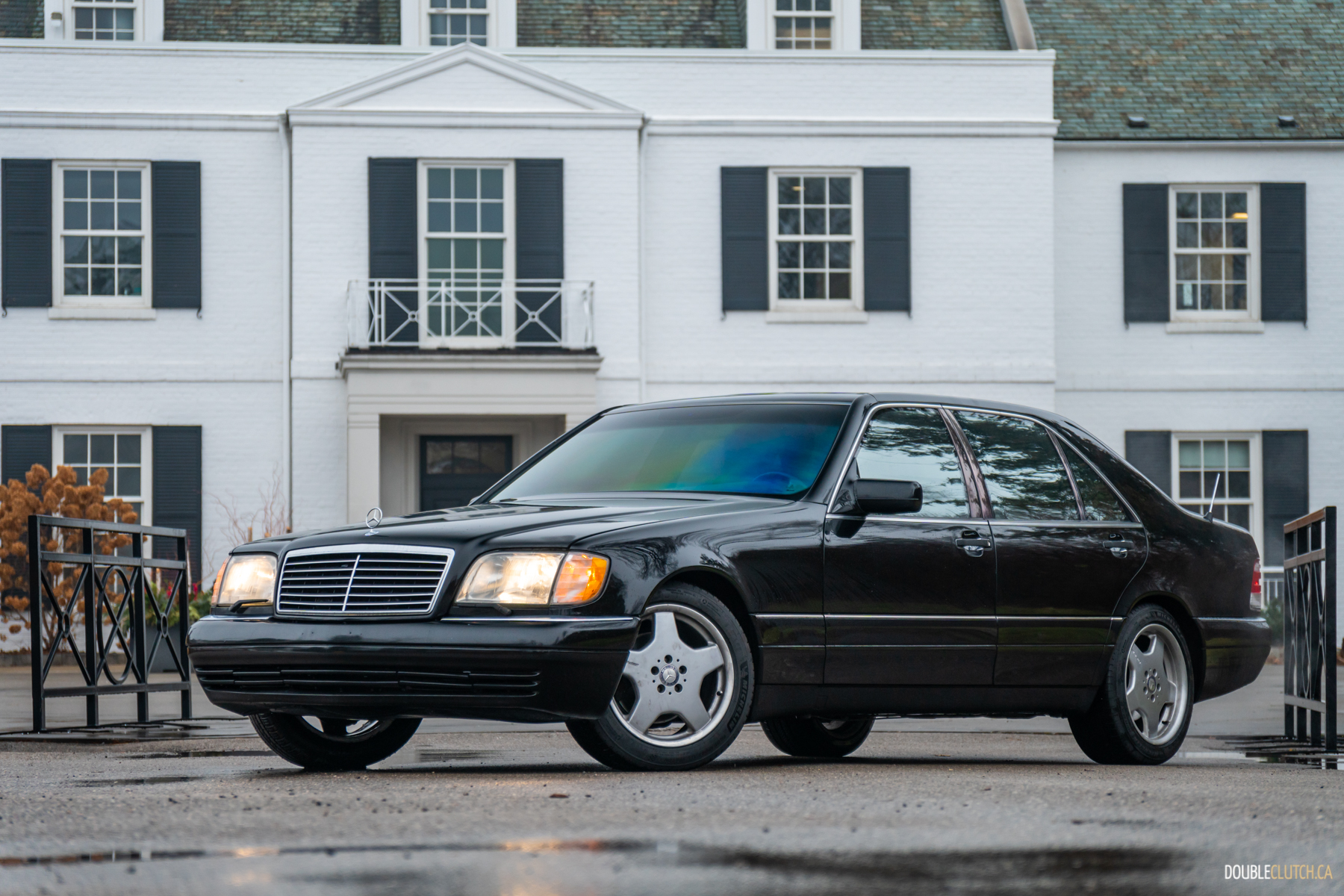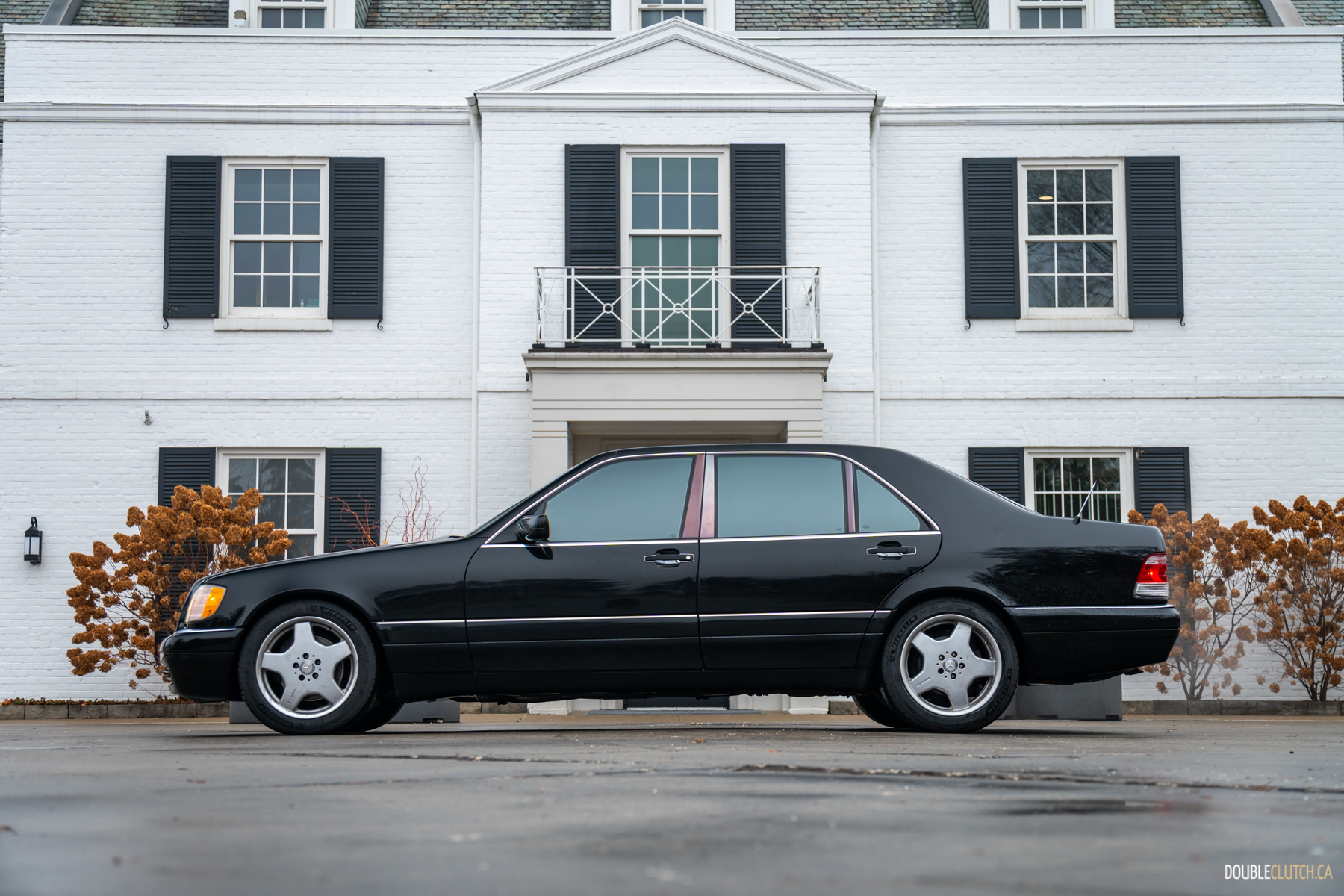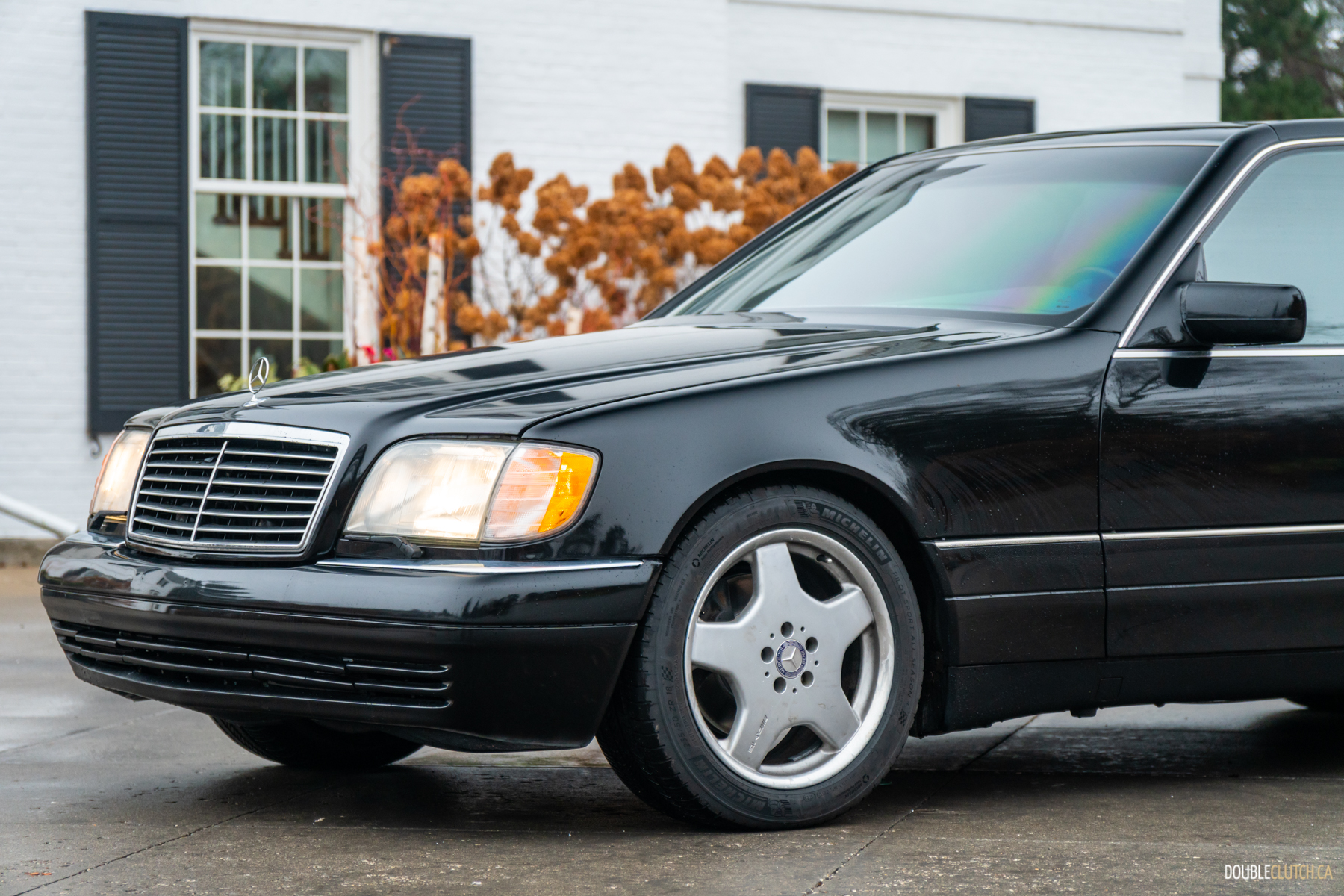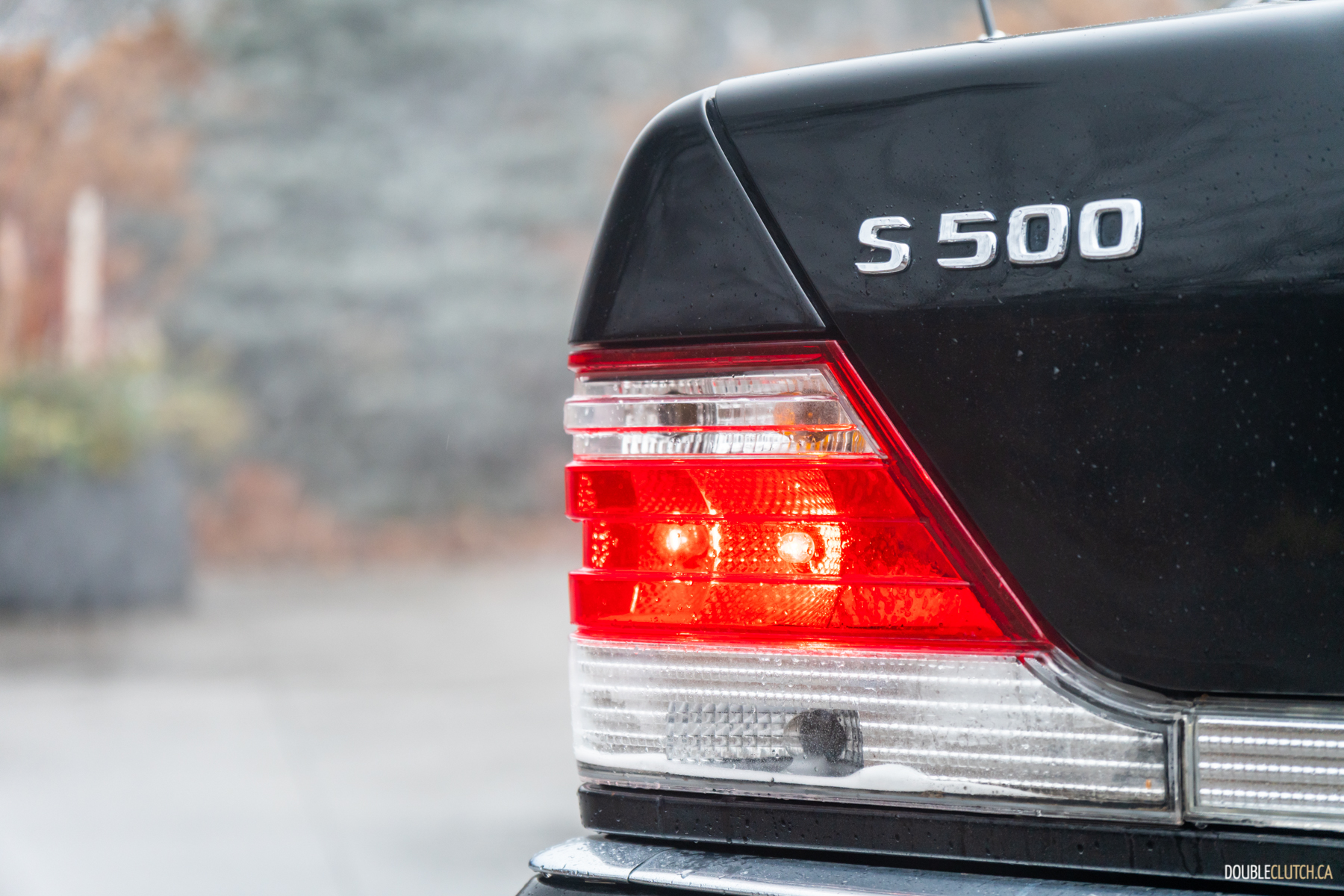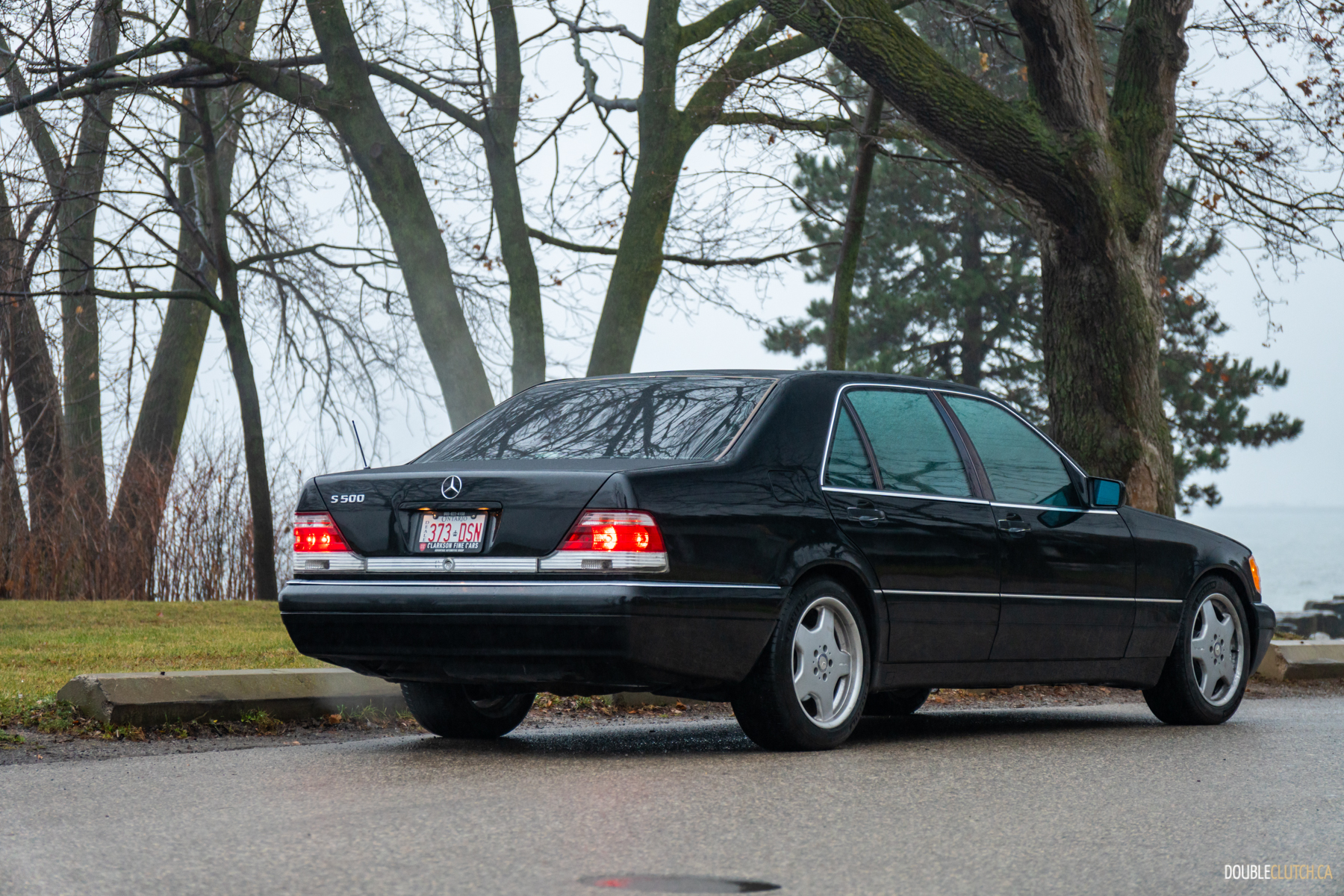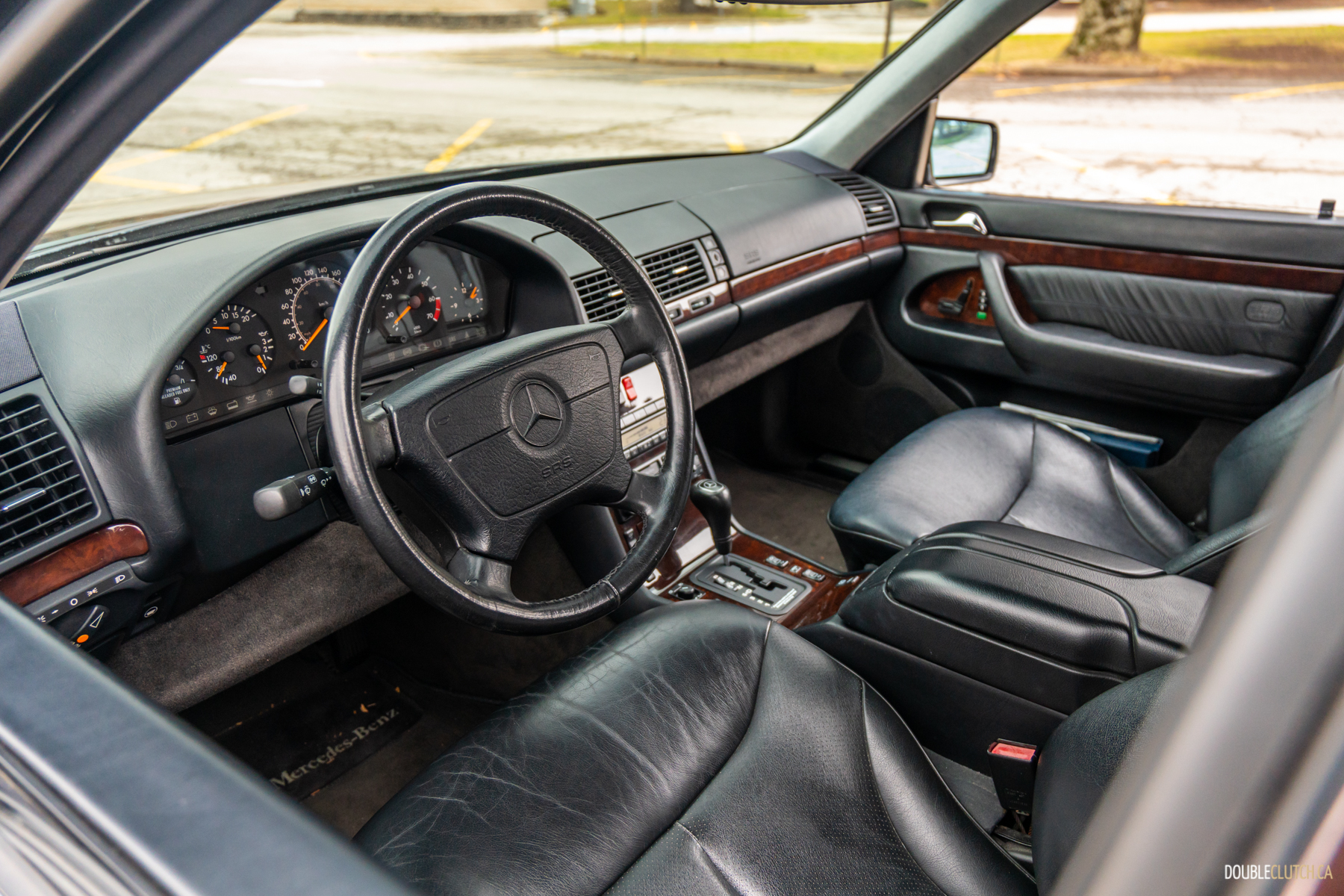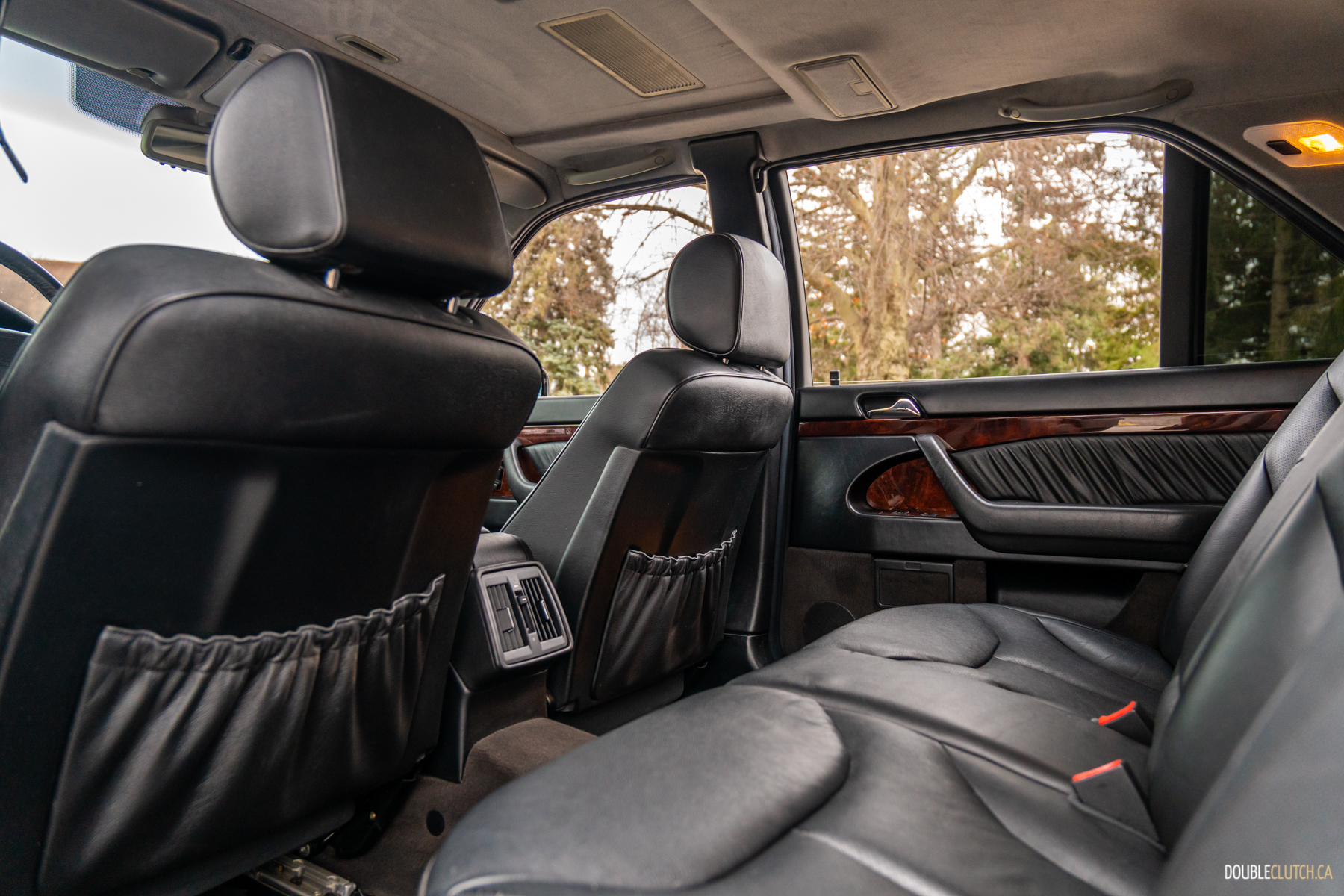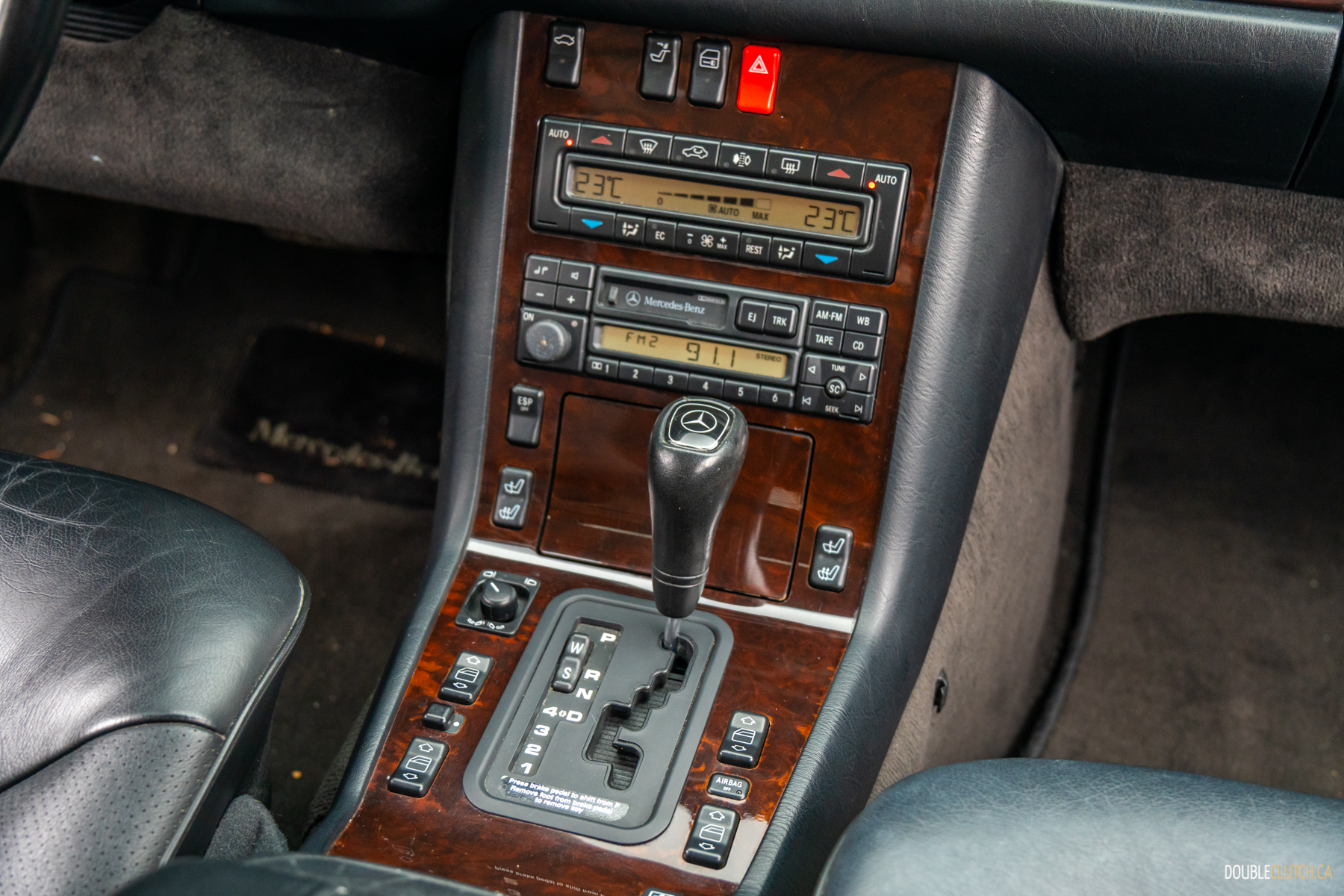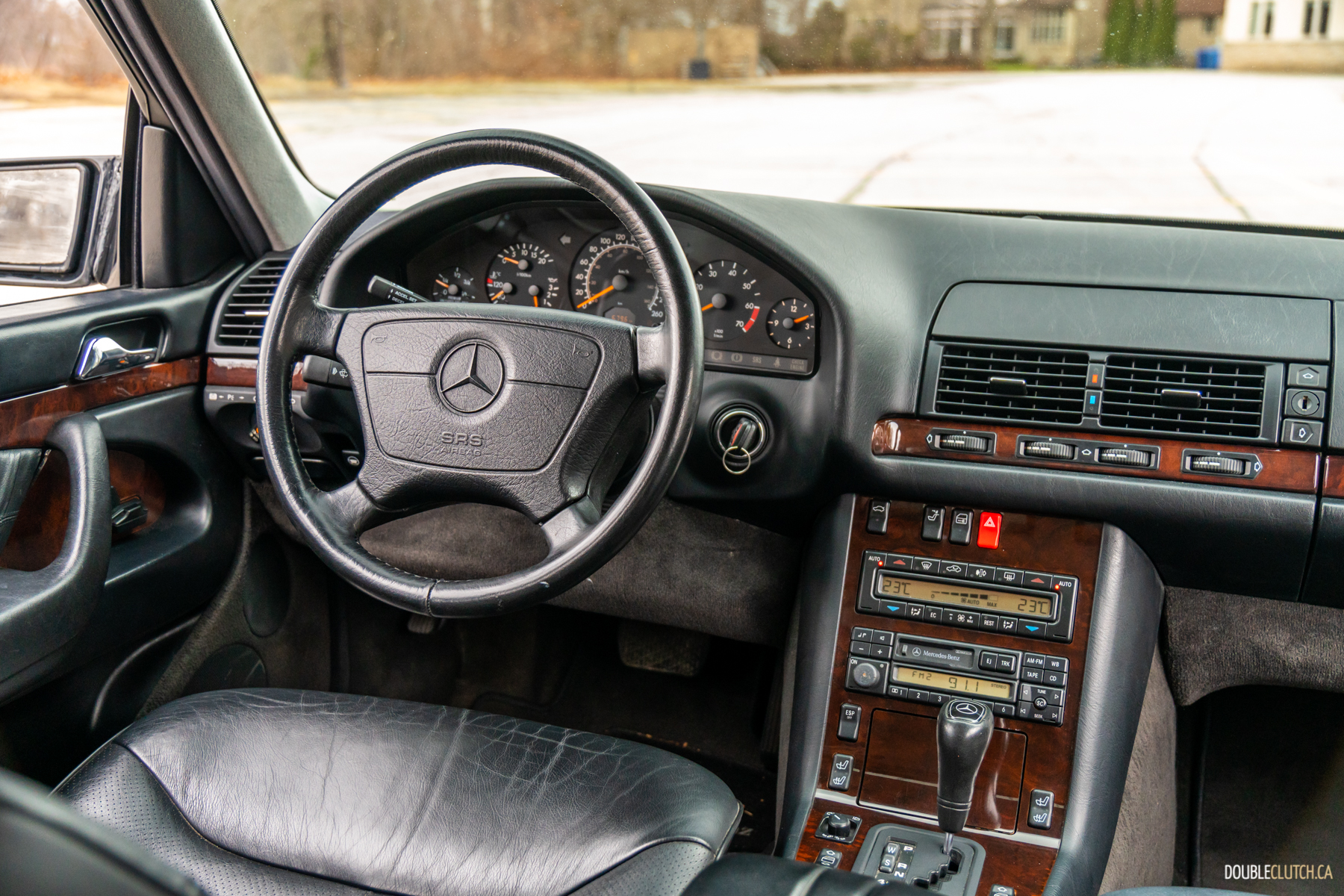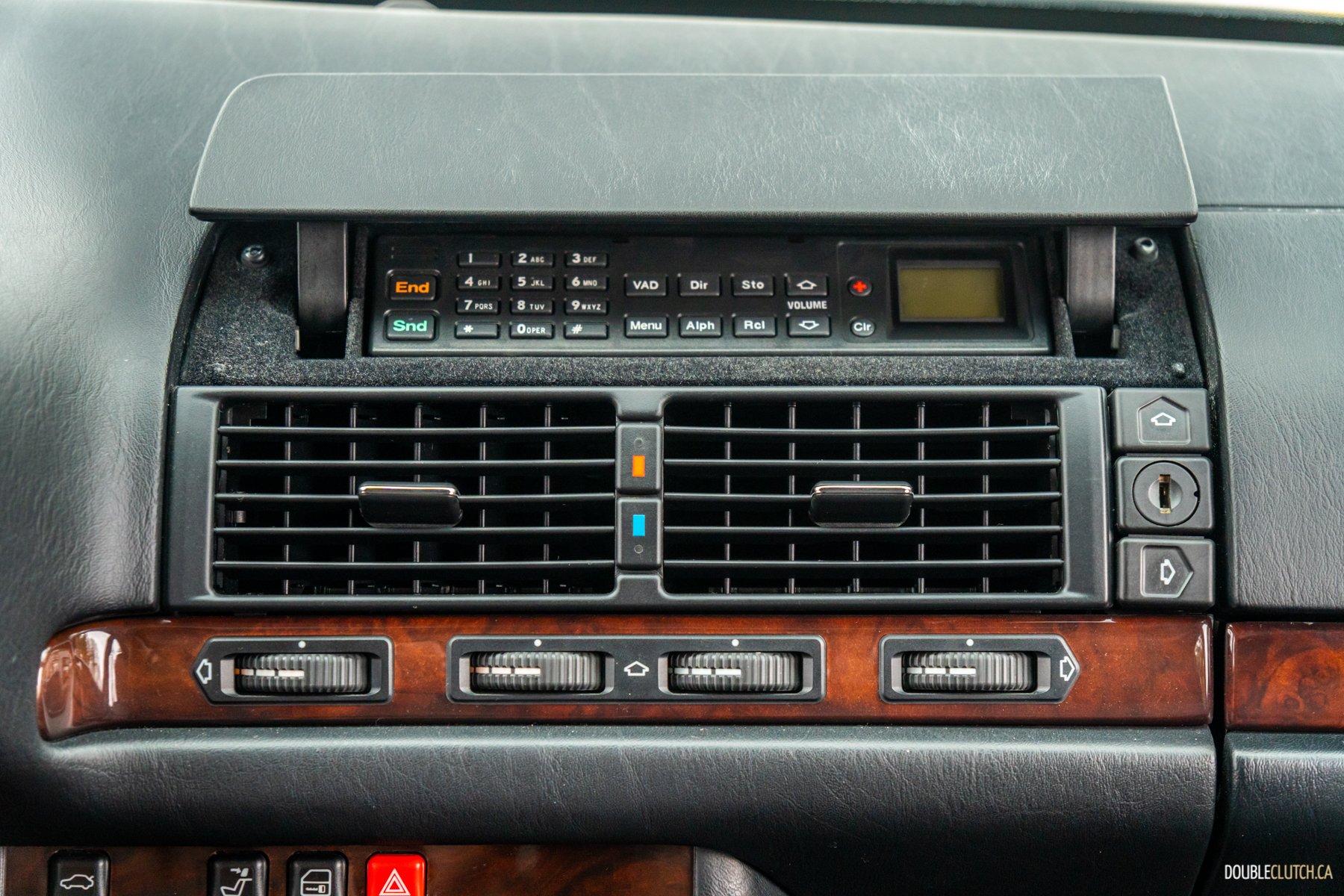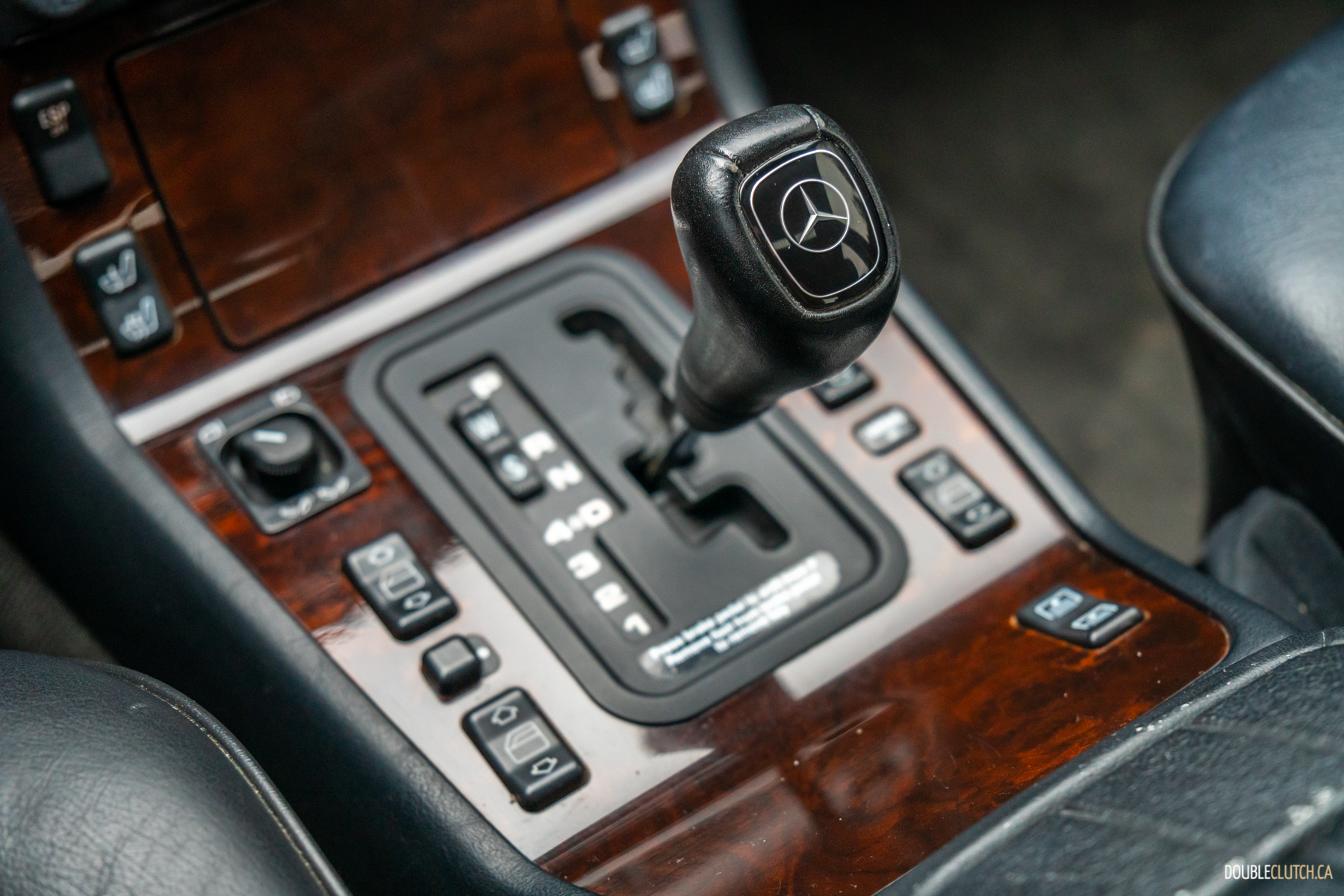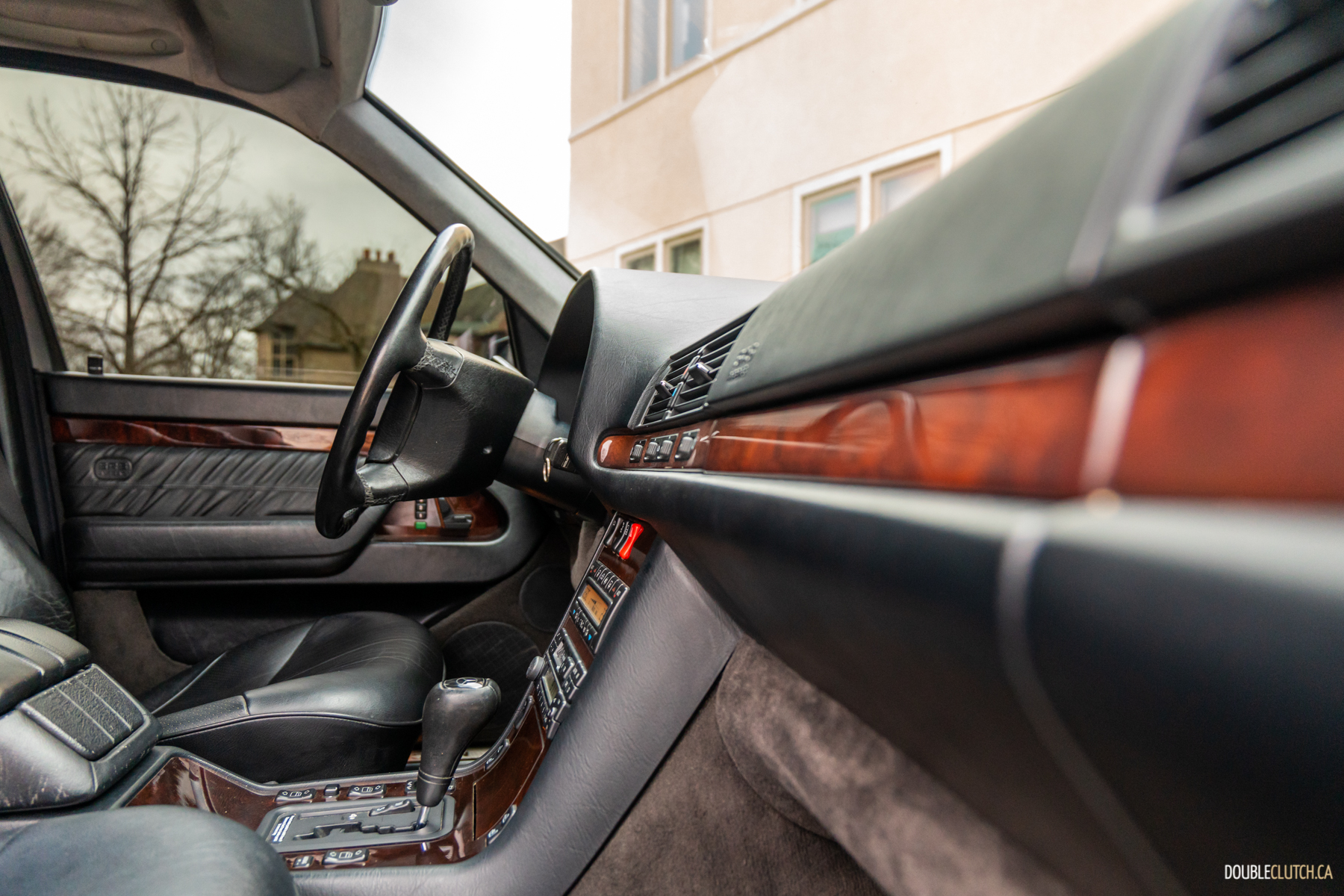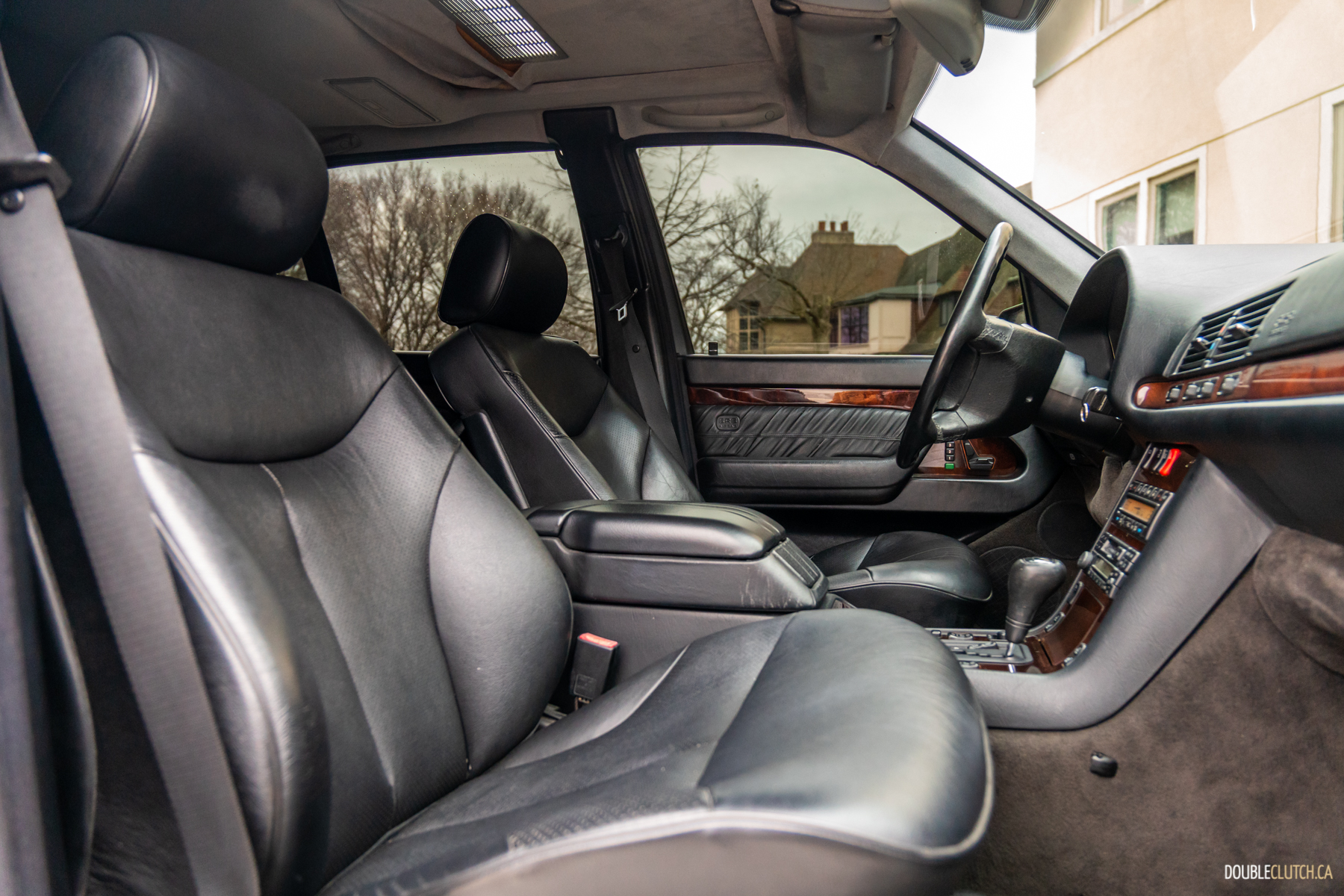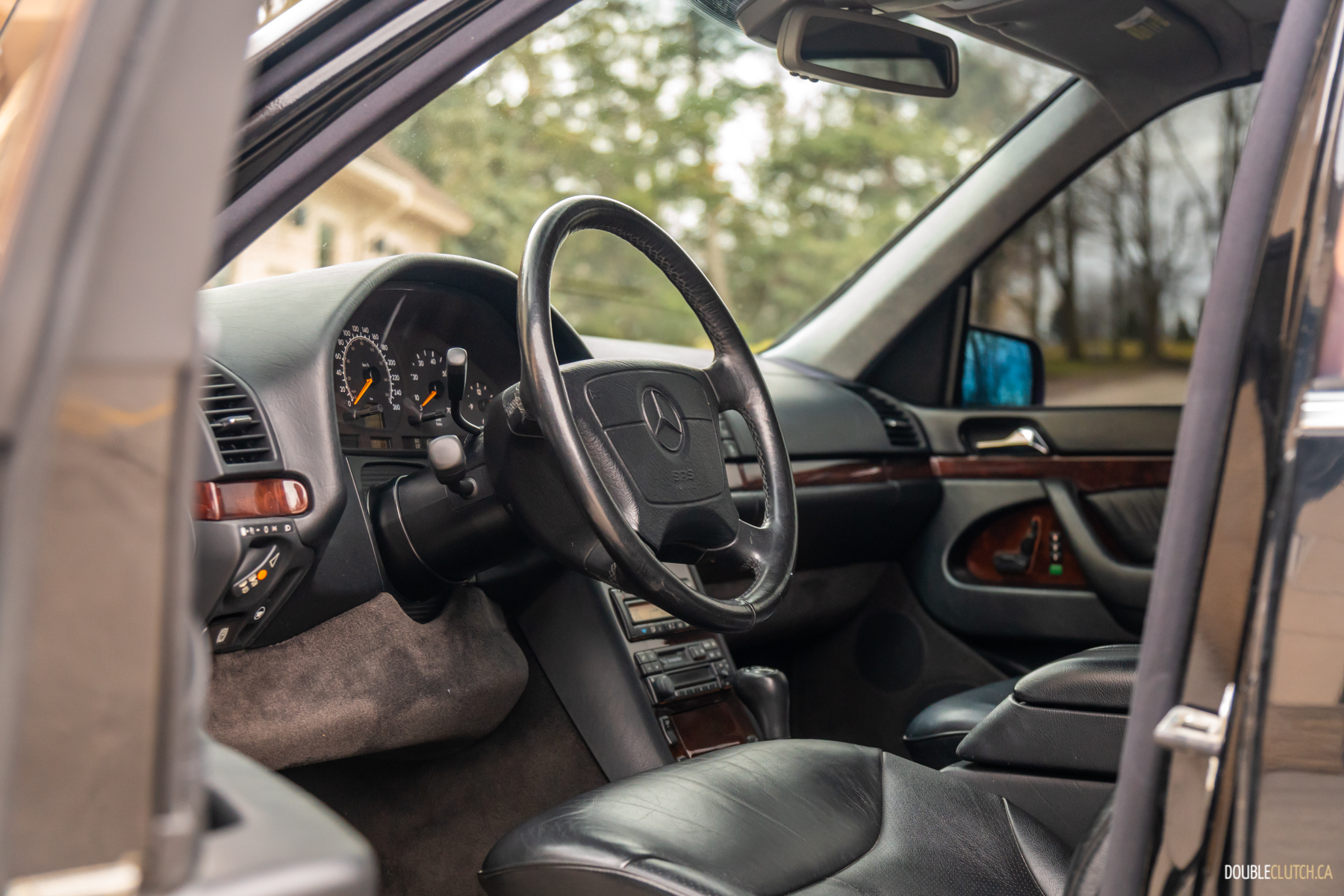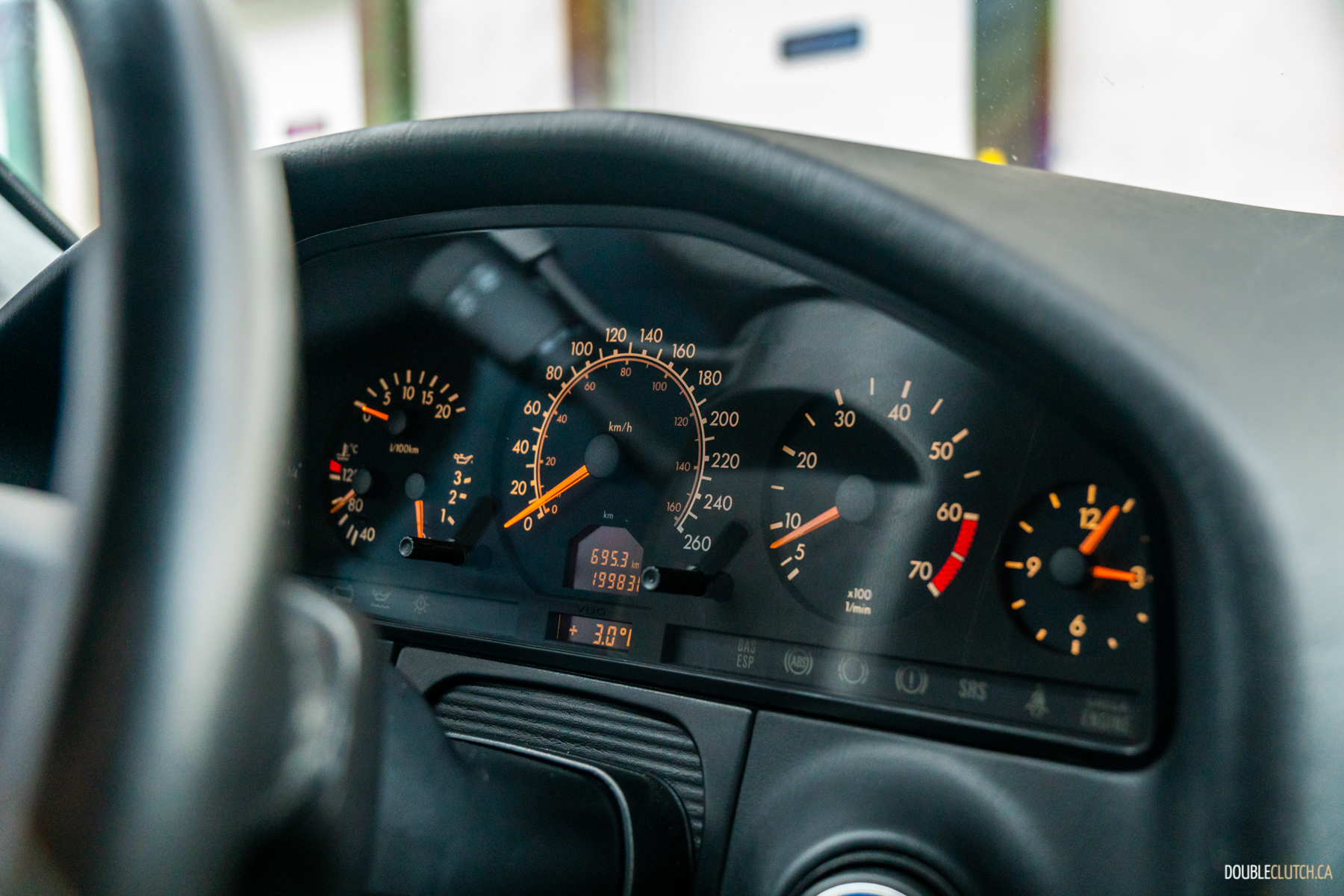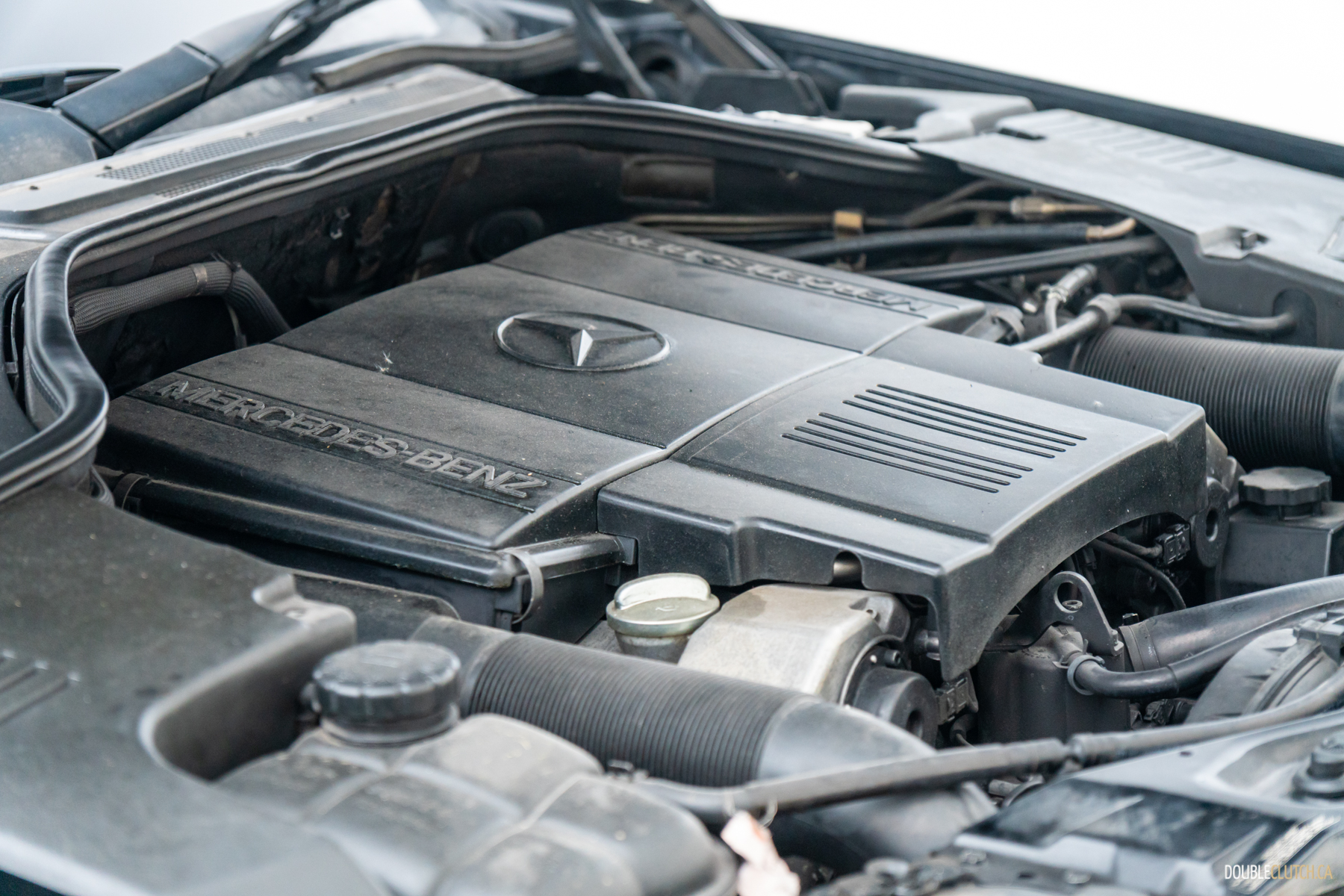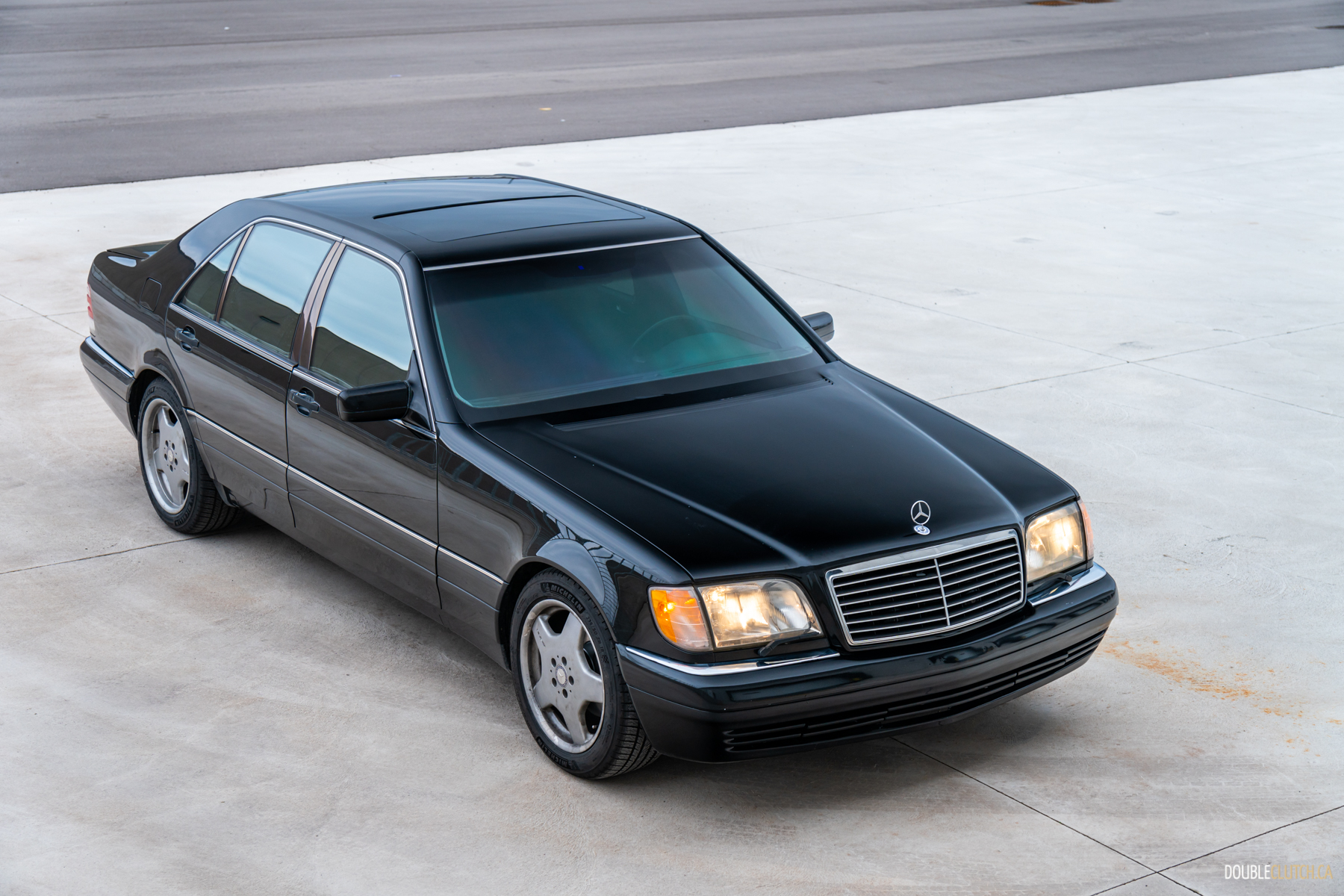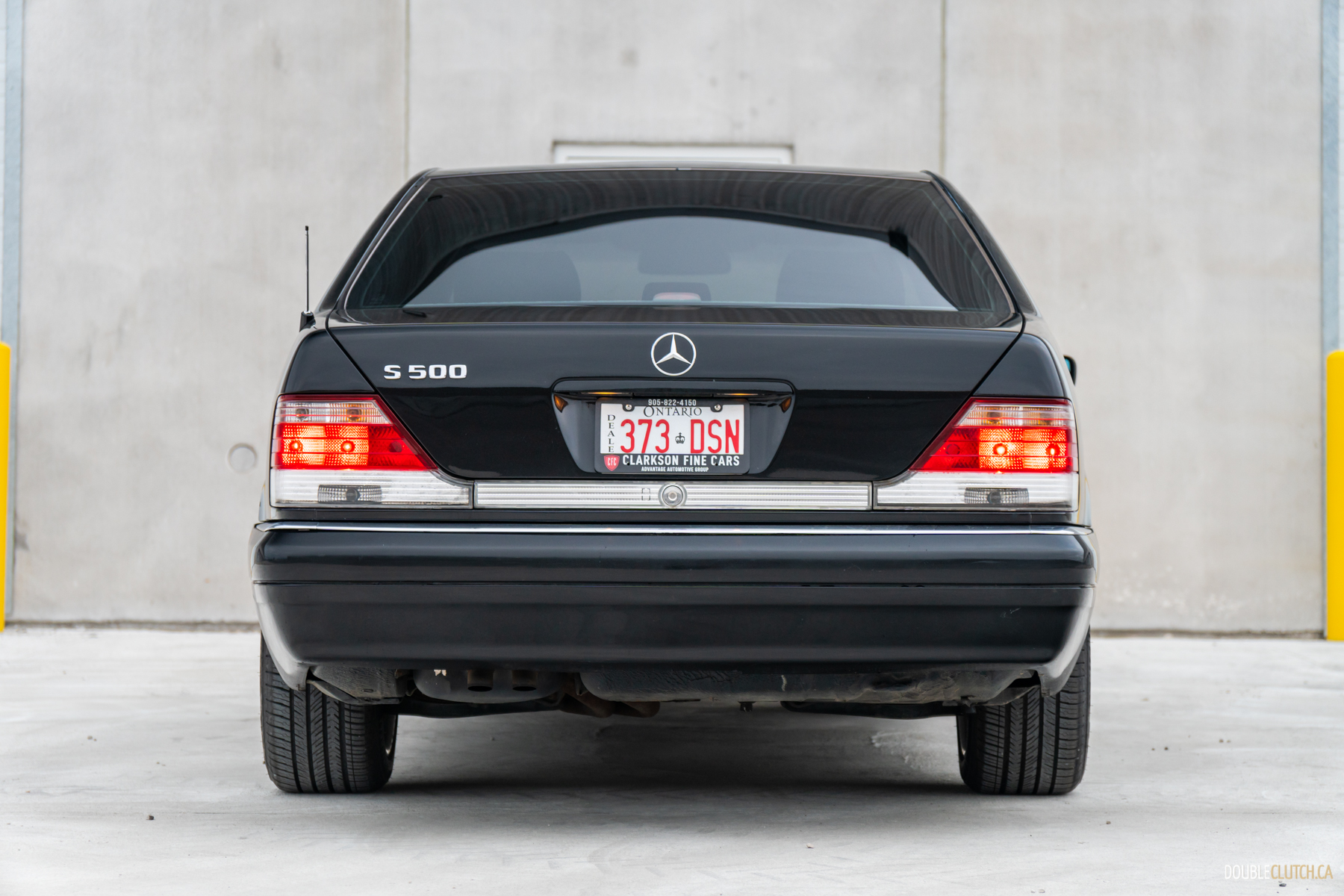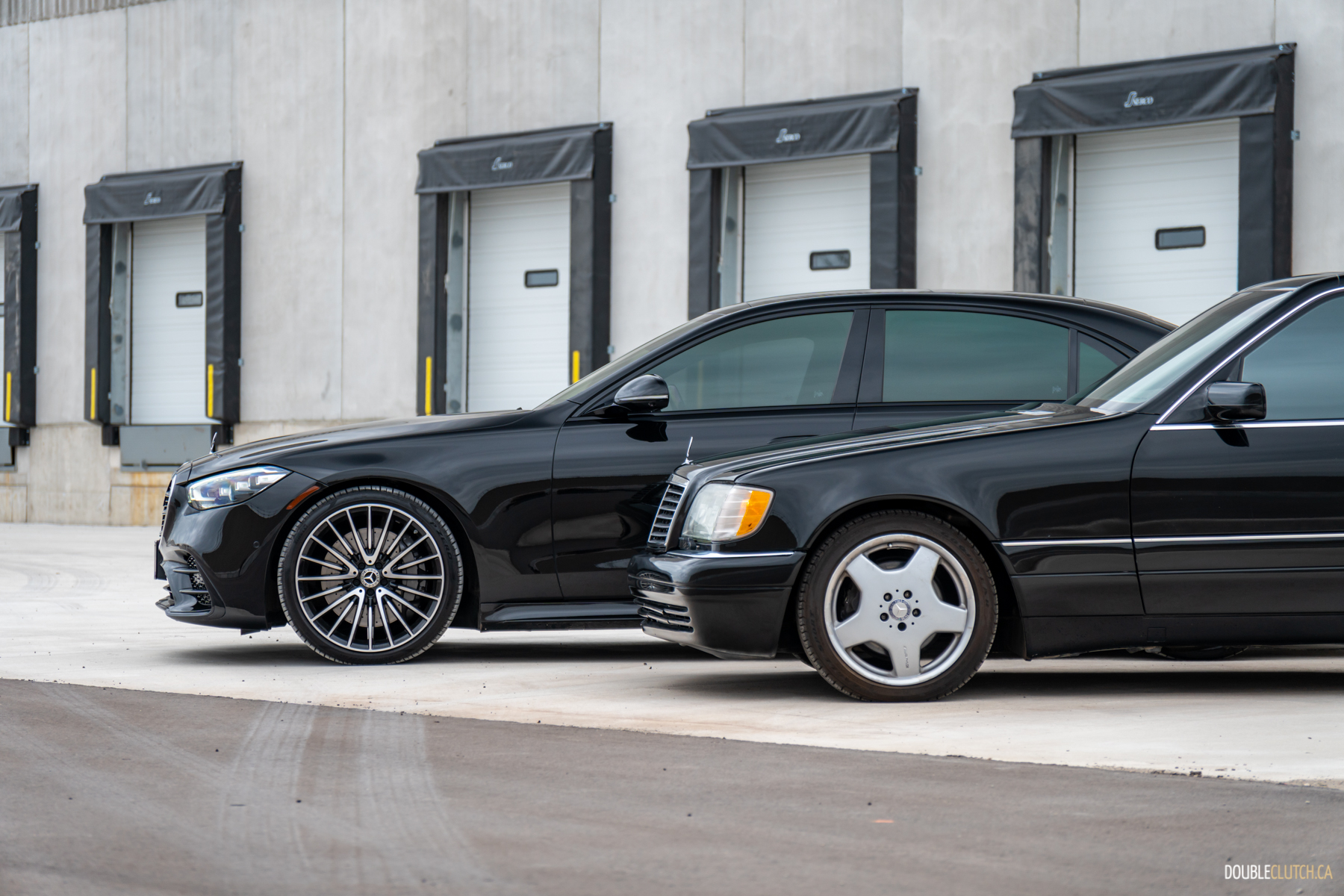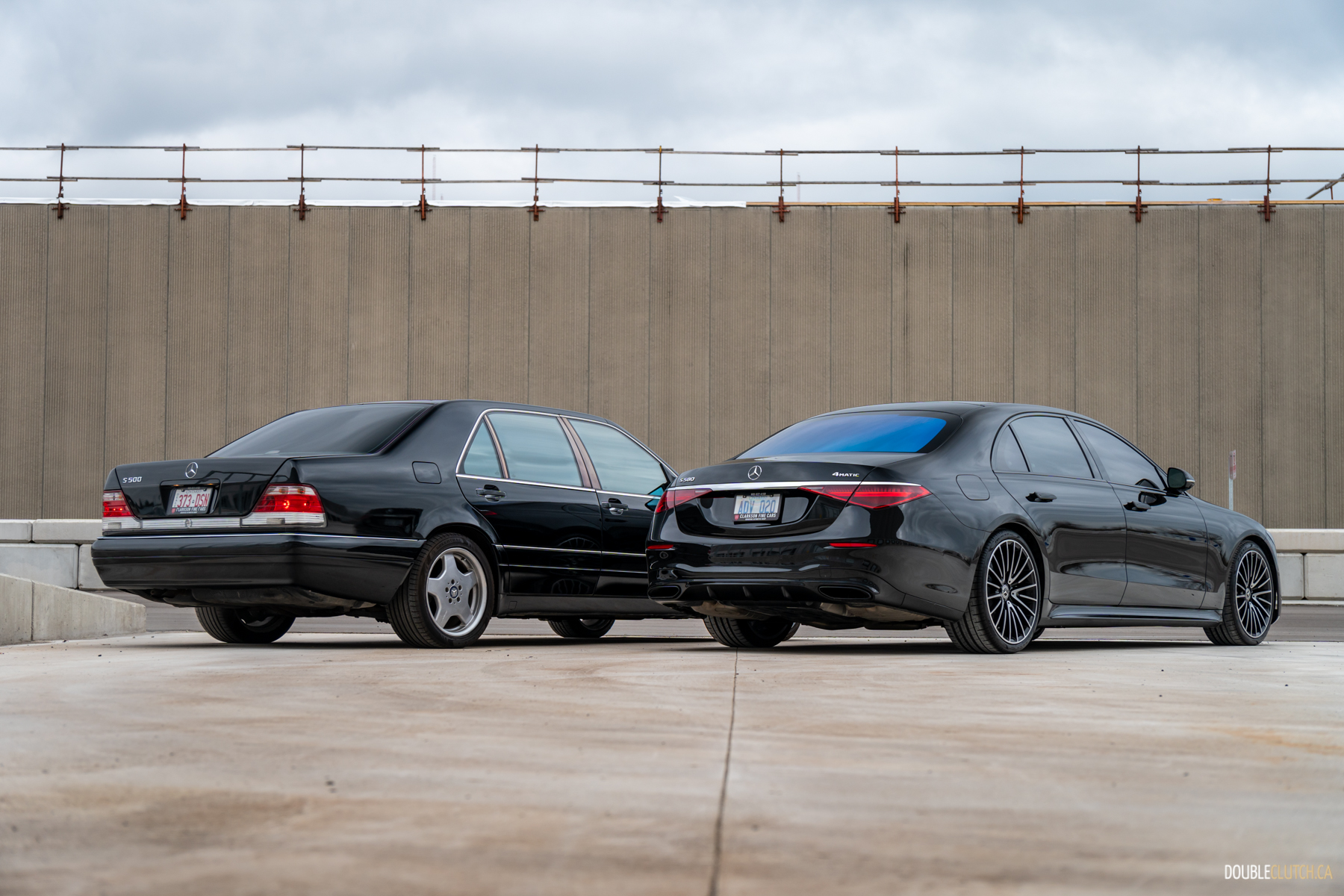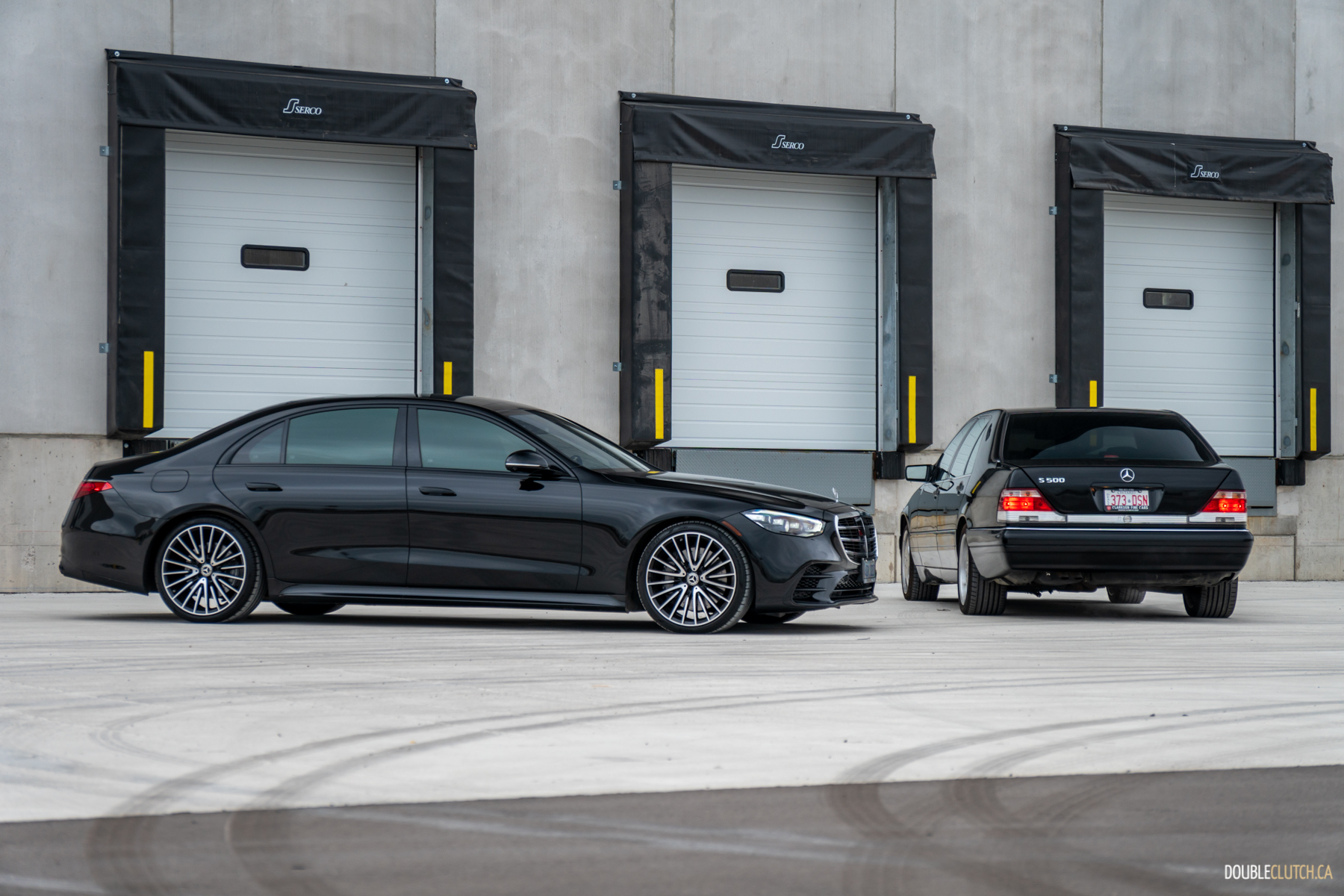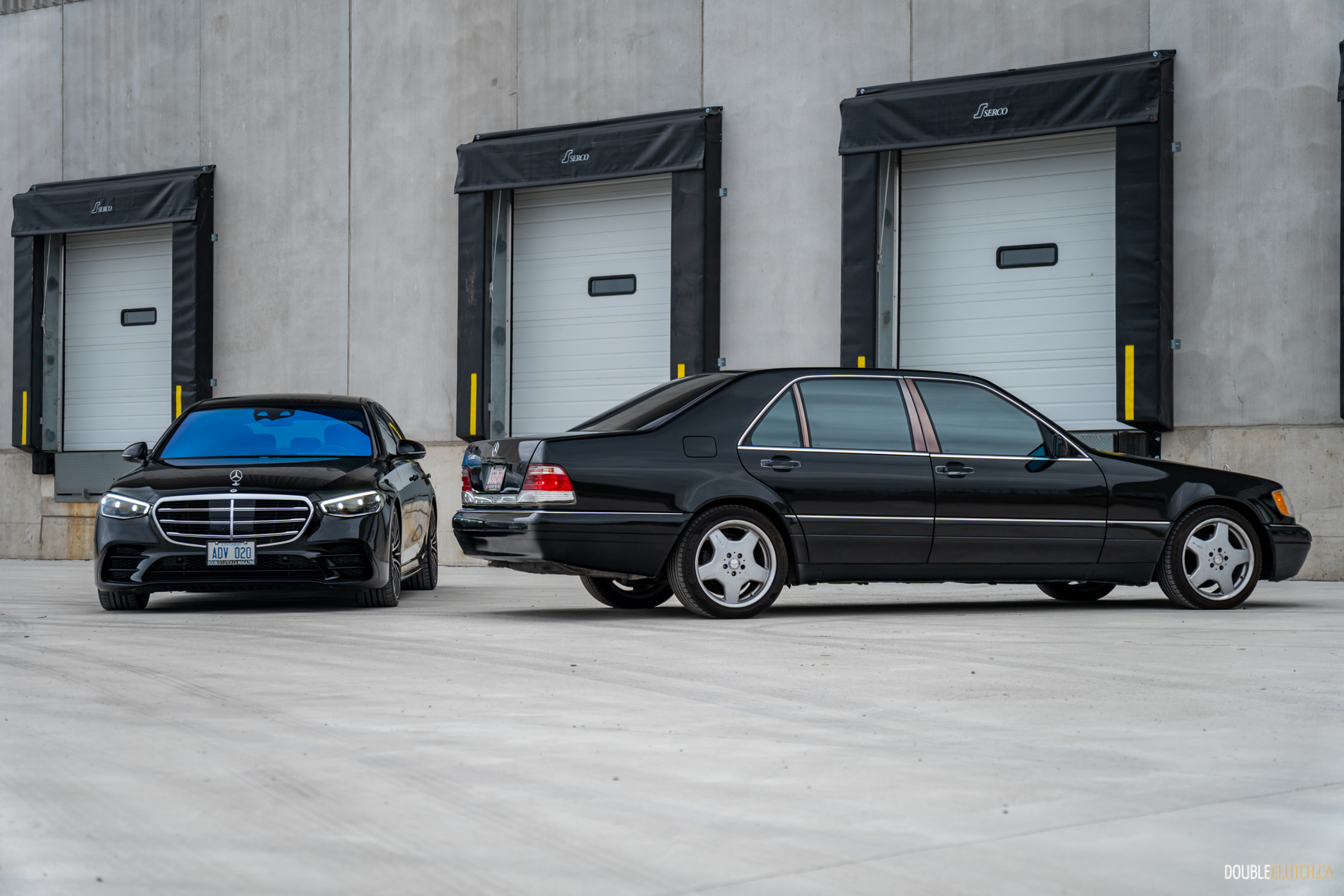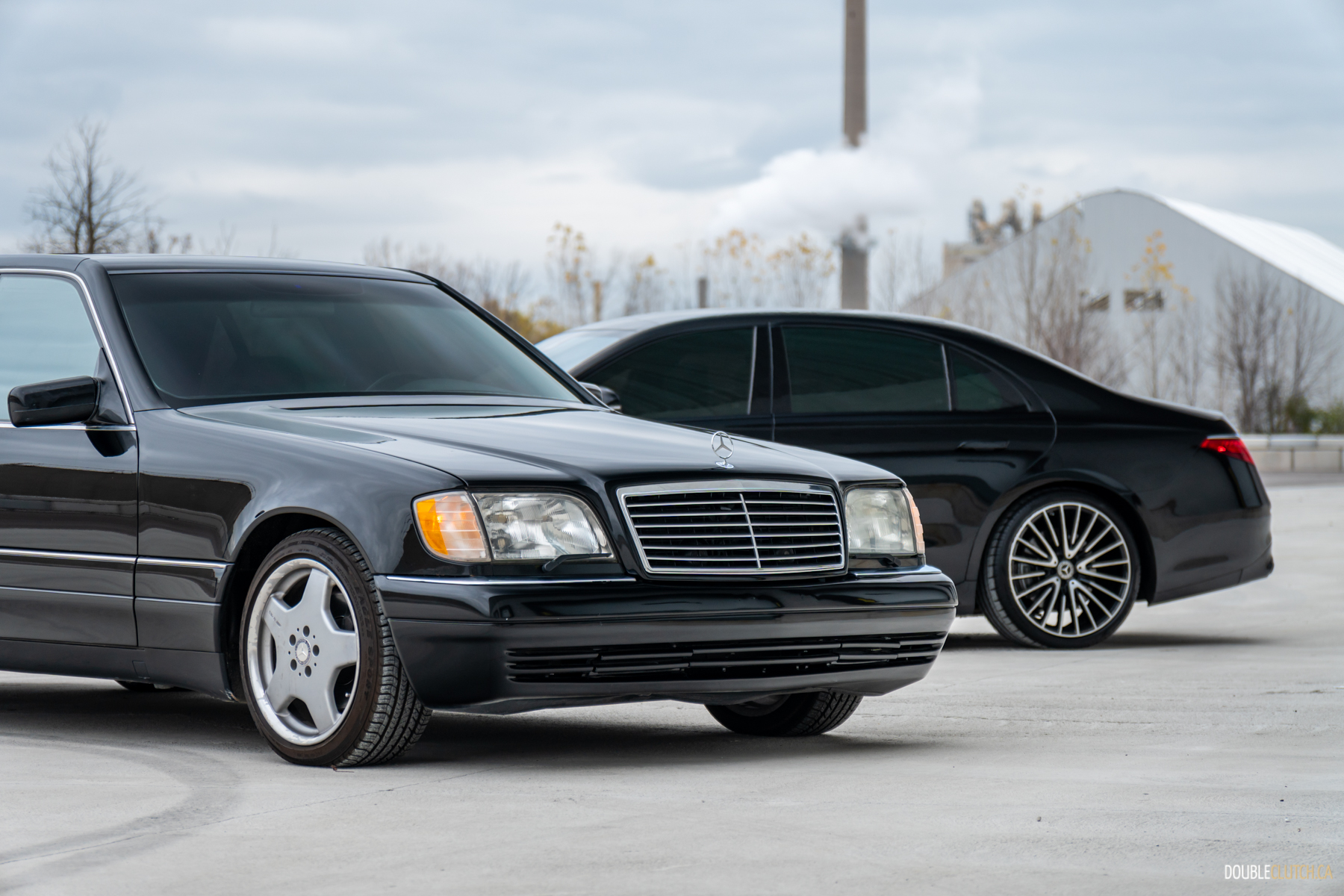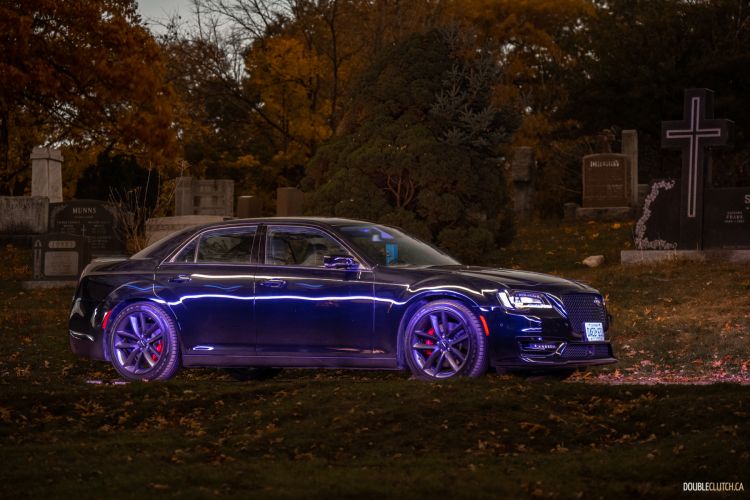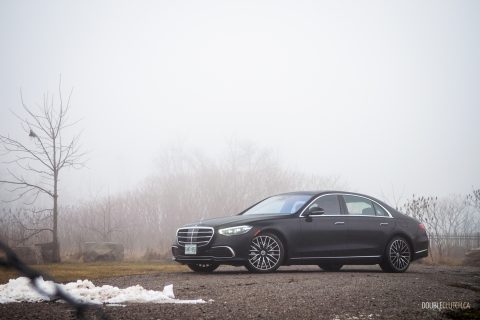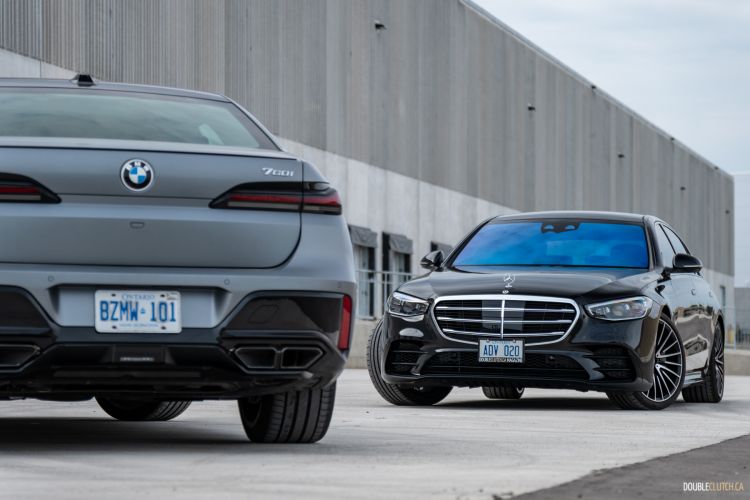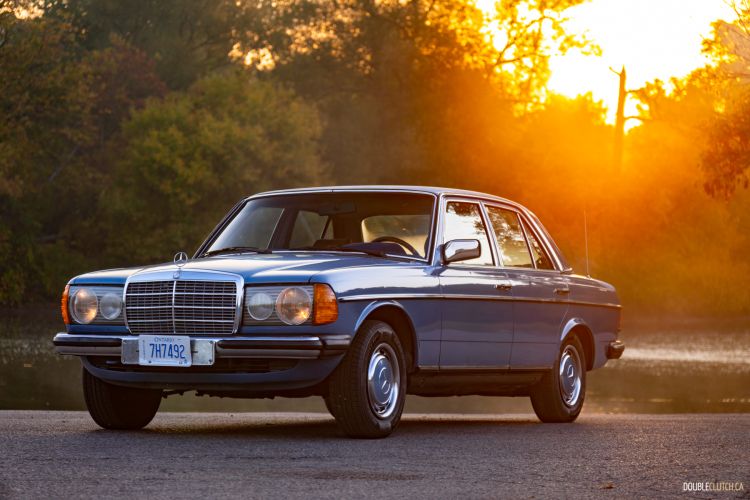The W140-generation Mercedes-Benz S-Class is a fascinating chapter in the long history of the legendary luxury car firm. Sold from 1992 to 1999, it represented the first time in the company’s long history that their status as an apex predator was challenged. Mercedes has always challenged themselves to do and be the best, but the 1999 Mercedes-Benz S 500 I recently had the privilege of driving is the result of what happens when that challenge comes from outside — when an apex predator is, for the first time, threatened.
The “S” in the S-Class stands for Sonder; it’s German for special. The Special Class cars always enjoyed the most incredible reputation, being “engineered like no other car in the world,” as was the company’s mission statement for decades. The S-Class represented the pinnacle of style, safety, luxury, performance, and unbridled innovation, often offering a glimpse into practices that wouldn’t trickle down to lesser cars for years. A Porsche might handle better, a Ferrari might have more power, a Bentley might have more decadent craftsmanship, and a Citroen might be more creative, but der Sonderklasse put all of that in one remarkable car. They were the standard of the world, absolutely untouchable.
Until they weren’t.

In the late 1980s, Mercedes-Benz found themselves in the middle of pincer movement, under attack on two fronts. BMW had been on a long trajectory to catch up to Mercedes, and in 1988, they finally caught them with the then-all-new 750iL flagship sedan. It was bigger, sleeker, safer, more sumptuous, and more futuristic than the aging W126 S-Class that carried Mercedes through the decade. Its biggest flex was its V12 engine, which all at once was more exotic, more powerful, more efficient, and oh-so-silky-smooth next to Benz’s aging V8. It was a triumph. My forebears in the press boldly called it the best car in the world, and turned the world upside down.
BMW had met them at eye-level, got a good offensive in, and gained the upper ground. This on its own was a shock, but there was another unlikely threat coming in right behind them that no one was ready for: Toyota. After doing a lot of heavy lifting to get over the stigma dogging Japanese cars after the Second World War, Toyota established a healthy foothold in the west, but wanted to break through the glass ceiling keeping them out of the in-crowd.
They set aside a massive team of talented engineers and designers to create an all-new, groundbreaking luxury car. Over a billion dollars were spent on countless hours and hundreds of prototypes. The car would feature an all-aluminum, quad-cam V8 that would be de-riguer through the 1990s, but they got to it before anybody else. BMW wouldn’t have theirs ready for years, and they narrowly beat Mercedes to market. They decided it was probably better to set up an entirely separate brand with separate marketing to sell this magnificent machine, and they called it Luxury Export for the US. Or, abbreviated: Lexus.
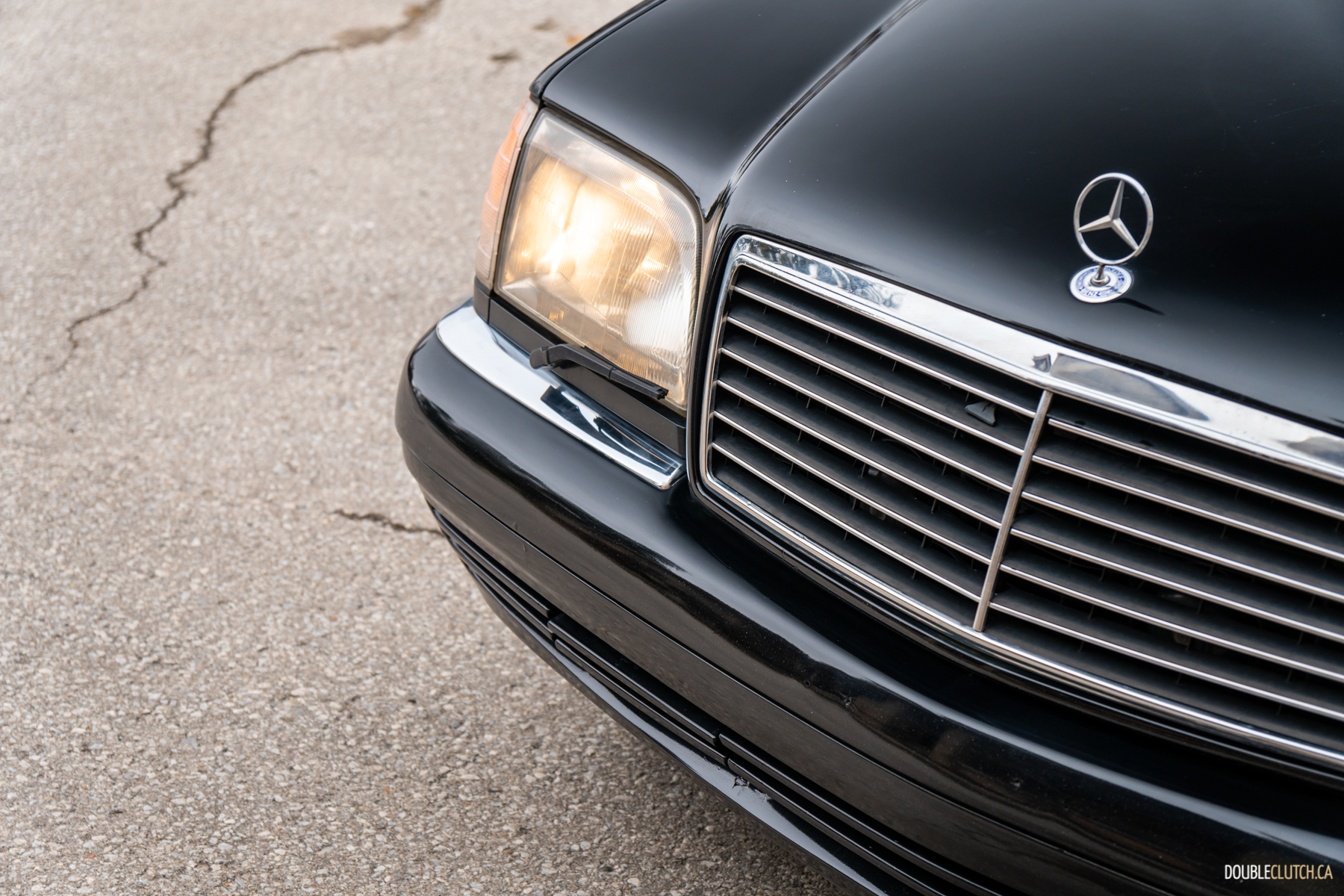
The Lexus LS 400 was a shot heard round the world, offering impeccable craftsmanship and surreally smooth road manners, comfortably on par (or better, depending on who you ask) with Benz’s best, with all the technology you could ever want and then some … for about the same money as an E-Class. This was a big problem for Mercedes — and BMW, and the entire rest of the luxury industry — so much so that they took Lexus to court, accusing them of positioning the LS 400 as a loss leader, deliberately undercutting and stealing sales at any cost.
So while they were reeling from a mean left hook from BMW beating them at their own game, Lexus snuck out of nowhere and sucker-punched from behind, capturing the value proposition seemingly without compromise. Der Sonderklasse, all of the sudden, wasn’t so special anymore. This was unprecedented. They were the apex predator of the automotive ecosystem, existing with no natural threats, and they now were cornered. But they did exactly what you’d expect a cornered animal to do — the W140 is that beast lashing out, asserting dominance and quelling any questions to its authority.
The W140 had been in development long before either of the above cars came to market, and was delayed an additional 18 months to ensure it wasn’t just competitive, but a proper haymaker. This car had to put the smackdown on BMW by outdoing them at everything, and had to be so magnificent in every detail that it reminded potential Lexus people why Mercedes could charge a fortune for their cars. You built a nice car, I built a Mercedes. We are not the same.
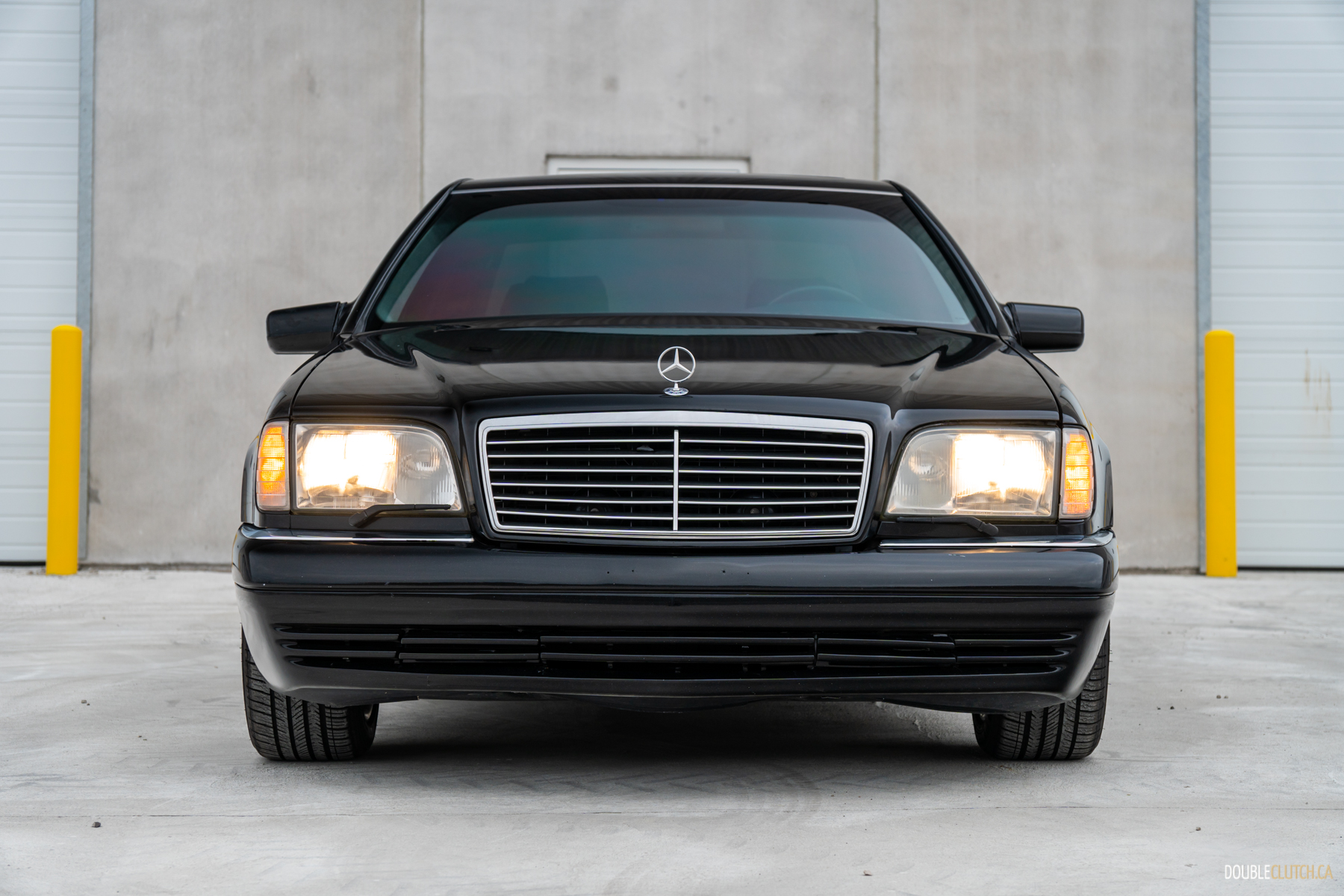
Mercedes-Benz trotted out the W140 Sonderklasse for 1992. It was introduced with many engine options, including a relatively frugal diesel six-cylinder, a pair of exotic V8s, and the crown jewel: an aluminum, modular, quad-cam, 6.0-litre, 48-valve, 12-cylinder monster pushing more than 400 horsepower. This amount of power was well clear of anything BMW had up their sleeve, and was deep into exotic car territory with the sublime demeanor of a Rolls-Royce.
It was an enormous car, preposterously long, wildly wide, surprisingly tall, and weighing in at nearly 5,000 pounds on the most loaded models, the W140 S-Class had its own gravitational field. Perhaps more than how huge it was, was how huge it looked. This car defined what we now know as slab-sided styling, with simple, unbroken surfaces, free of hard creases and clutter, with an emphasis on proportions, presence, and timelessness.
The most sonder S-Class ever was launched to mixed reception. While a lot of reviews — notably in the U.S. — praised it for its astonishing comfort and remarkable on-road behaviour, others — not the least of which being Mercedes’ own board of directors — weren’t so fond of it despite totally eclipsing its legendary W126 progenitor, leapfrogging its competitors from near and far and propelling Mercedes into the future.
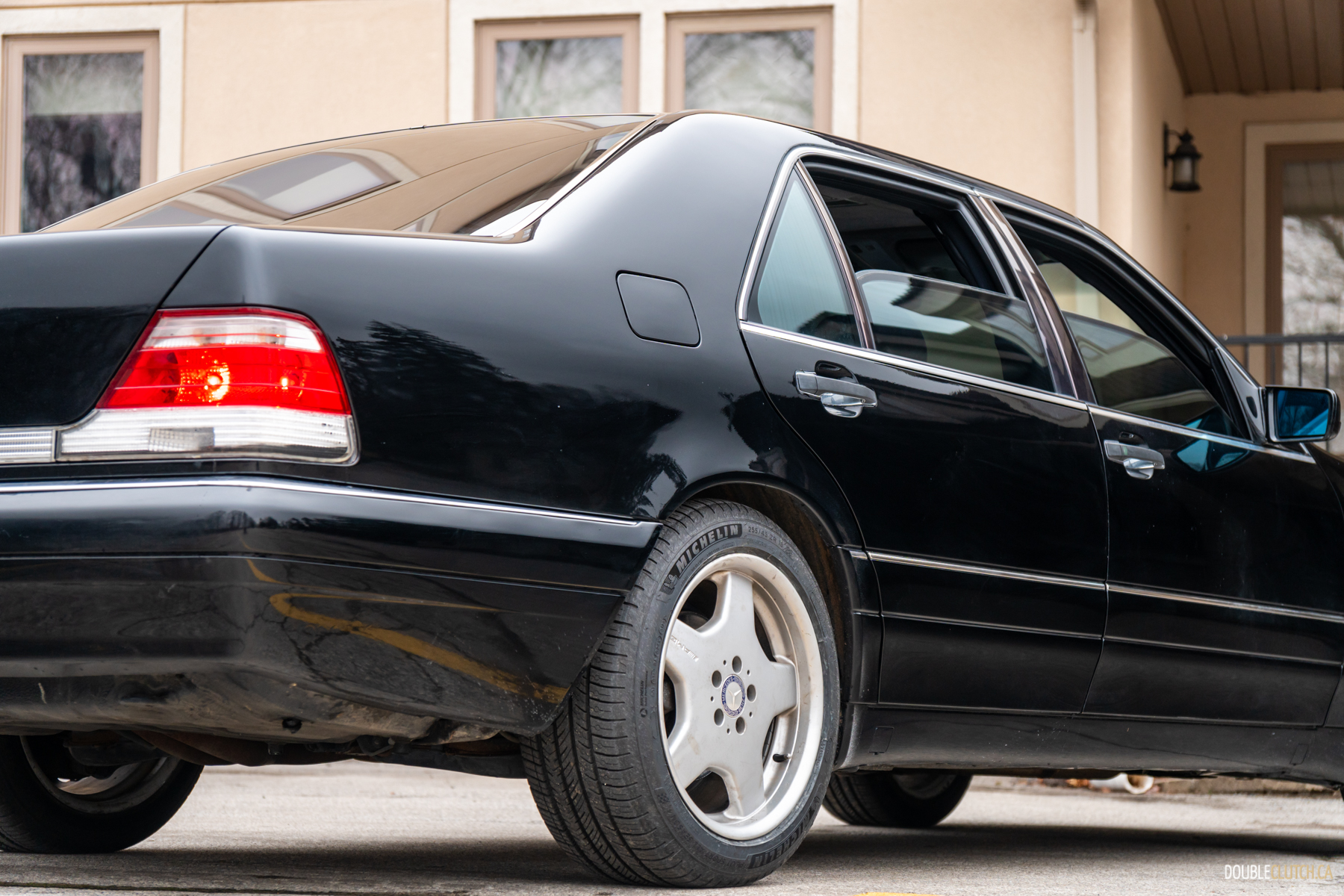
Where BMW hid the size of its flagship with taut lines, Mercedes celebrated it. The W140 was so big that early models had little antennae on the rear corners that popped up in reverse to help negotiate parking by showing where the far reaches of the car are. The W140 was so heavy that the tires would flat-spot prematurely. The W140 was seen as ostentatious; a bloated monument to Mercedes’ own hubris. It didn’t help that it made its delayed debut in the midst of a recession, where the greed-is-good ethos of the 1980s was roundly being rejected, and environmental sustainability was just starting to become a talking point, which made it something of a villain.
The additional development time and pressure to answer its new competition pushed the W140 S-Class way, way over budget. Its unheard-of complexity led to a lot of costly teething problems on early cars, from simple electrical gremlins from novel accessories like the soft-close doors or leaking A/C evaporators necessitating the removal of the entire dashboard to repair, to front suspension components failing prematurely under the immense weight — and this was before the biodegradable wiring harness fiasco that afflicted every Mercedes in the mid-1990s. The chief of engineering who oversaw the project stepped down following the W140’s launch.
The car I had the privilege of driving comes from the W140’s final year of production, where most of the kinks had been ironed out but sales had slowed to a trickle. Europe had moved on to the new W220 S-Class for the 1999 model year, but the last few W140s were sold in the U.S. and Canada to fill the gap year. This car is one of 741 S 500s for 1999, and it was specced perfectly: classic black-on-black with monoblock wheels. Oh baby.
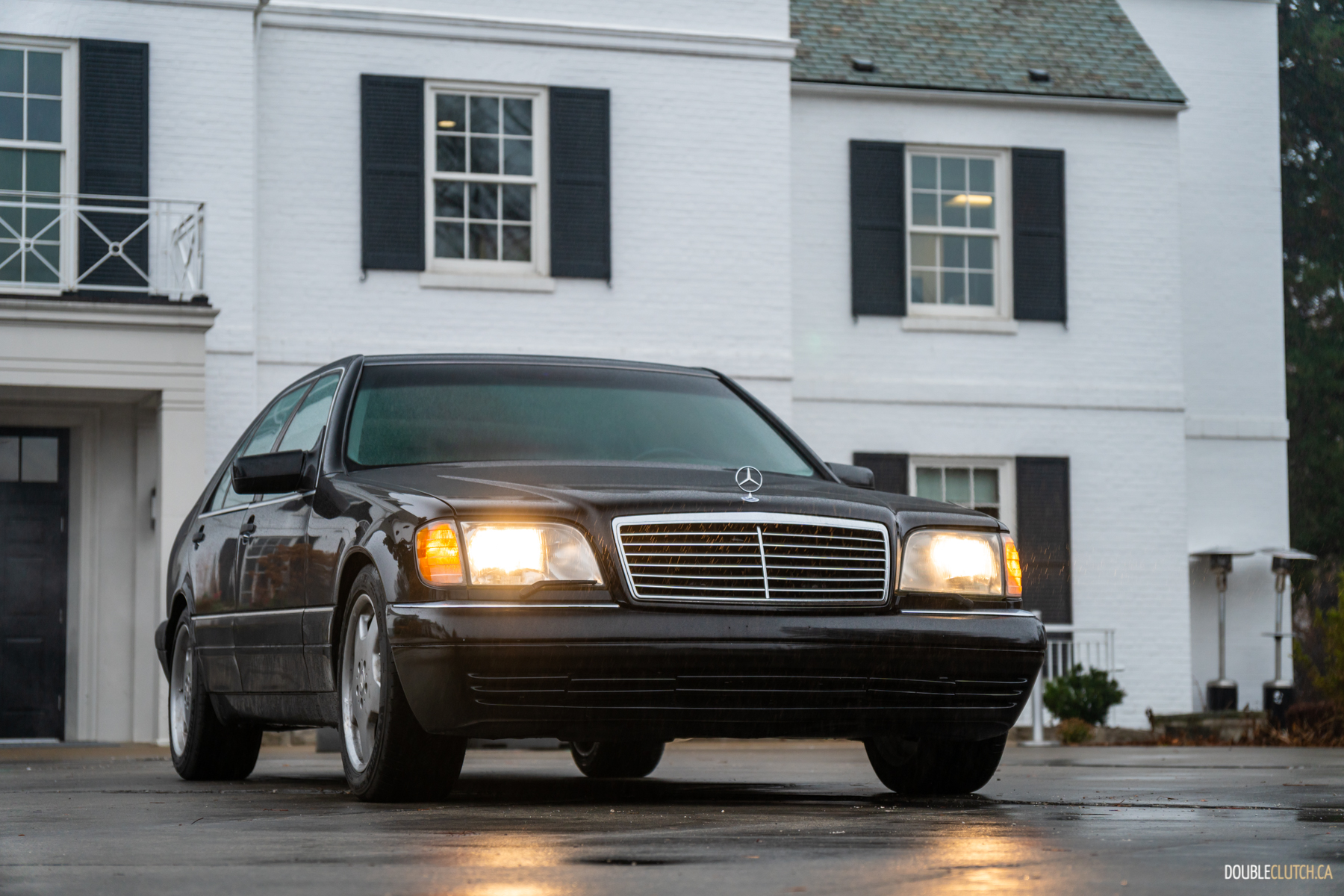
For all its criticism on launch and notorious difficulties, this car — even decades later — still looks and feels like almost nothing else on the road (except maybe kinda sorta the latest-gen BMW 760i, ironically). Bruno Sacco’s brilliant design still looks timeless, all at once being enchanting and imposing, like an elegant obsidian monolith. And like Stanley Kubrick’s monolith, the W140 seems to swell as you approach, appearing almost impossibly large, drawing you into its orbit with raw magnetism.
The doors crack open like stone gates, allowing passage into this leather-lined tomb, now standing as a memorial to a bygone era of pursuing excellence at any cost. The stone doors close behind you with a carefully curated clonk, sealing you in silence. The interior layout is typical 1990s Mercedes, looking somewhat plain in contrast to the glitzy mood lighting, polished piano black trim, and multitude of multimedia in modern Benzes, but like the straightforward style of the temple walls outside, it hasn’t aged out and stands the test of time.
Like the rest of the car, every material feels properly expensive. The leather is firm and thick, the soft-touch plastics on the doors and dash look and feel like an extension of that leather, the buttons and controls all have deliberate haptic detents, and the burled walnut is rich and deep, injecting some warmth into the antechamber. The seats are ergonomically sculpted and supremely comfortable, and as you’d expect, there is an expanse of space in every dimension.
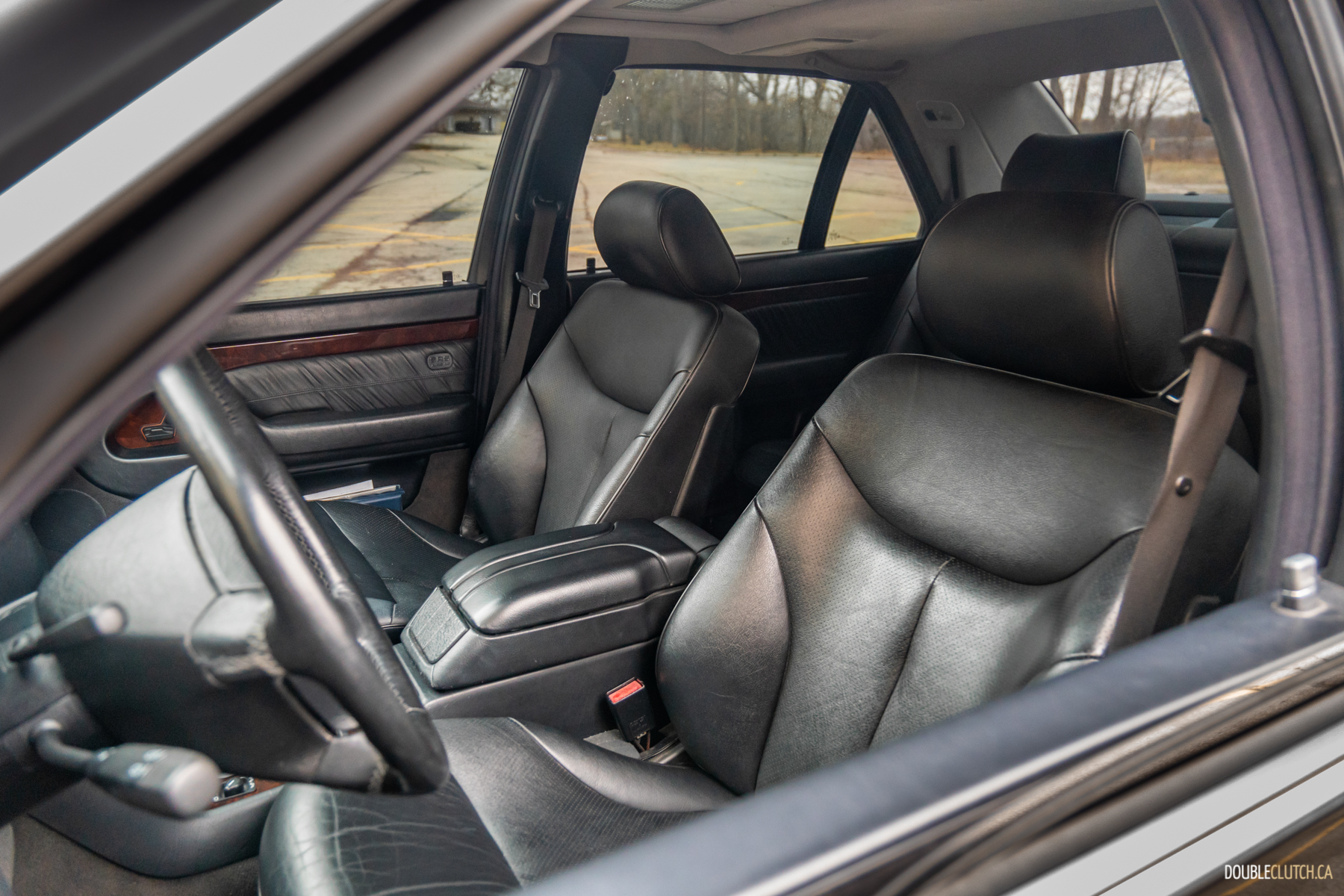
The most impressive thing about this car is the way it drives. Mercedes’ marketing monologue is no joke; this behemoth is a sublime thing to pilot, and I can scarcely imagine how otherworldly it was when freshly unleashed upon the world. Our example was fitted the most well-known and well-liked of its many power plants, the race-proven 5.0-litre dual overhead-cam V8. It’s renowned for being stout, smooth, and powerful, putting out 315 horsepower and 347 pound-feet of torque when new, routed through a slick five-speed automatic transmission in this final-year car.
Those numbers might not sound like much now, but it’s sufficient to succeed at providing a sense of plenty, that there’s always more than enough muscle under your right foot to move effortlessly. The chassis responses are similarly effortless, with precise and deliberate steering, deftly weighted to straddle the sensation of helming something substantial while still feeling slight. Output from the pedals are subdued, with long travel, almost forcing serenity in your movements, always feeling like there’s more underfoot if needed.
This S 500 doesn’t drive down the road; it presides over the road. The sounds of the outside world are not a concern, with the only persistent auditory penetration coming from the gentle grumble of the engine to soothe your disquiet mind. It’s wholly unmoved by the imperfections of the road, callously ignoring them like bad news from a world away. If urgency is called for, it hustles itself with grace, not hiding from its heft, but handling it admirably. The S 500 a triumph, every agonized-over engineering call coalescing into more than the sum of its parts, a wake-up call to what a proper car should feel like. There is nothing on the road like it.
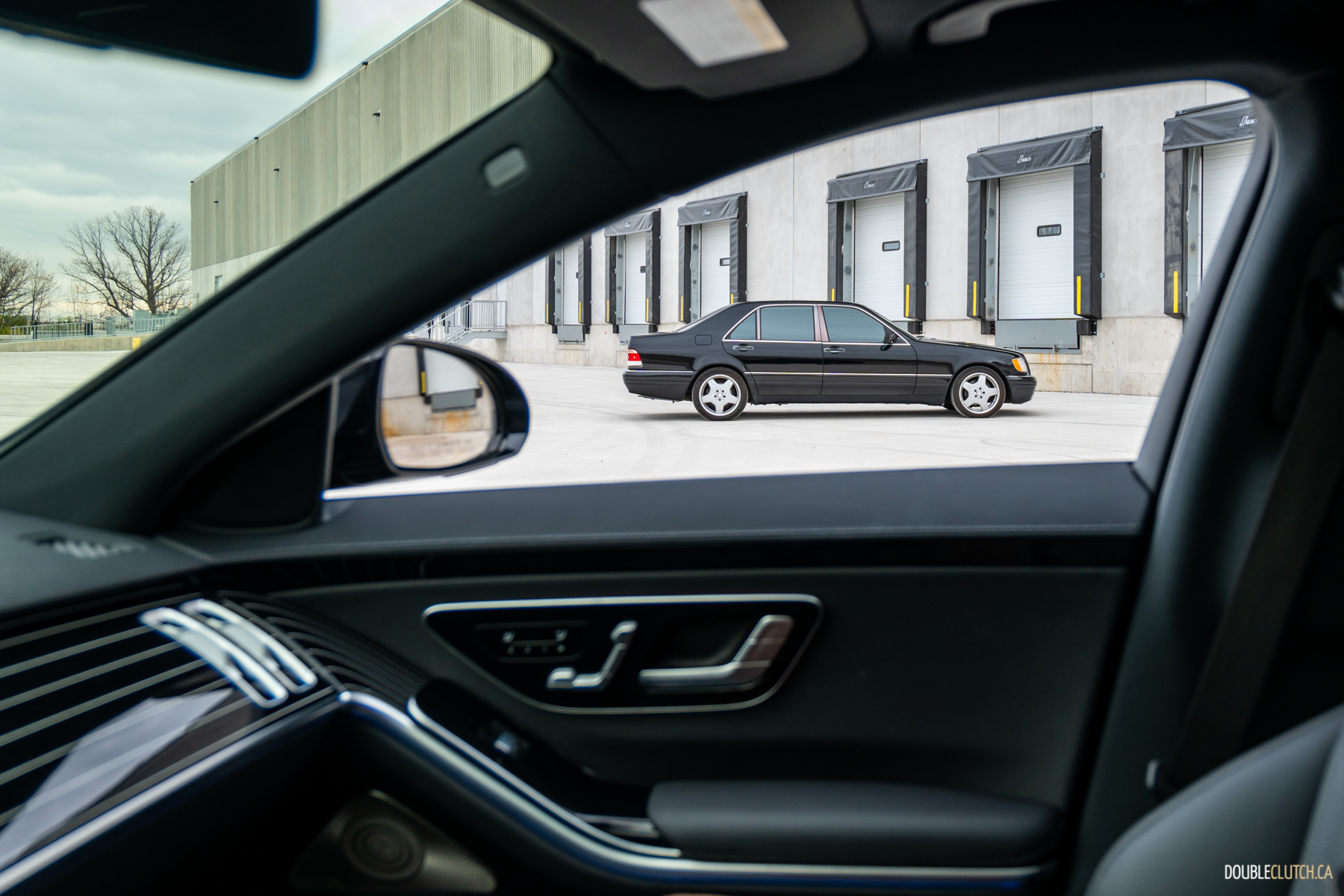
Well, almost nothing.
I drove this S 500 back-to-back with a brand-new S 580, and the most astonishing takeaway is that despite being decades older and having driven halfway to the moon in its life, the W140 really didn’t feel all that different. I’ve driven the previous-gen W126, and they’re incredible cars, but they definitely feel old. The W140, despite being four generations removed from modernity, feels impervious to the passage of time. It’s like they got to this point, and stopped. There was nowhere else to go.
Innovation after this car stopped being about the drive, the feel, and the core tenets of what an S-Class should be, and started being more about technology augmenting the engineering — as seen in Mercedes’ finicky Active Body Control suspension that followed. When they had nowhere to go with that, it just started being about tech for tech’s sake, complying with broader forces because what else do you do? I constantly harp on Mercedes for being slaves to trends and gimmickry, especially in the EQ lineup, but now I sort of see the position they’re in; that this car put them in.
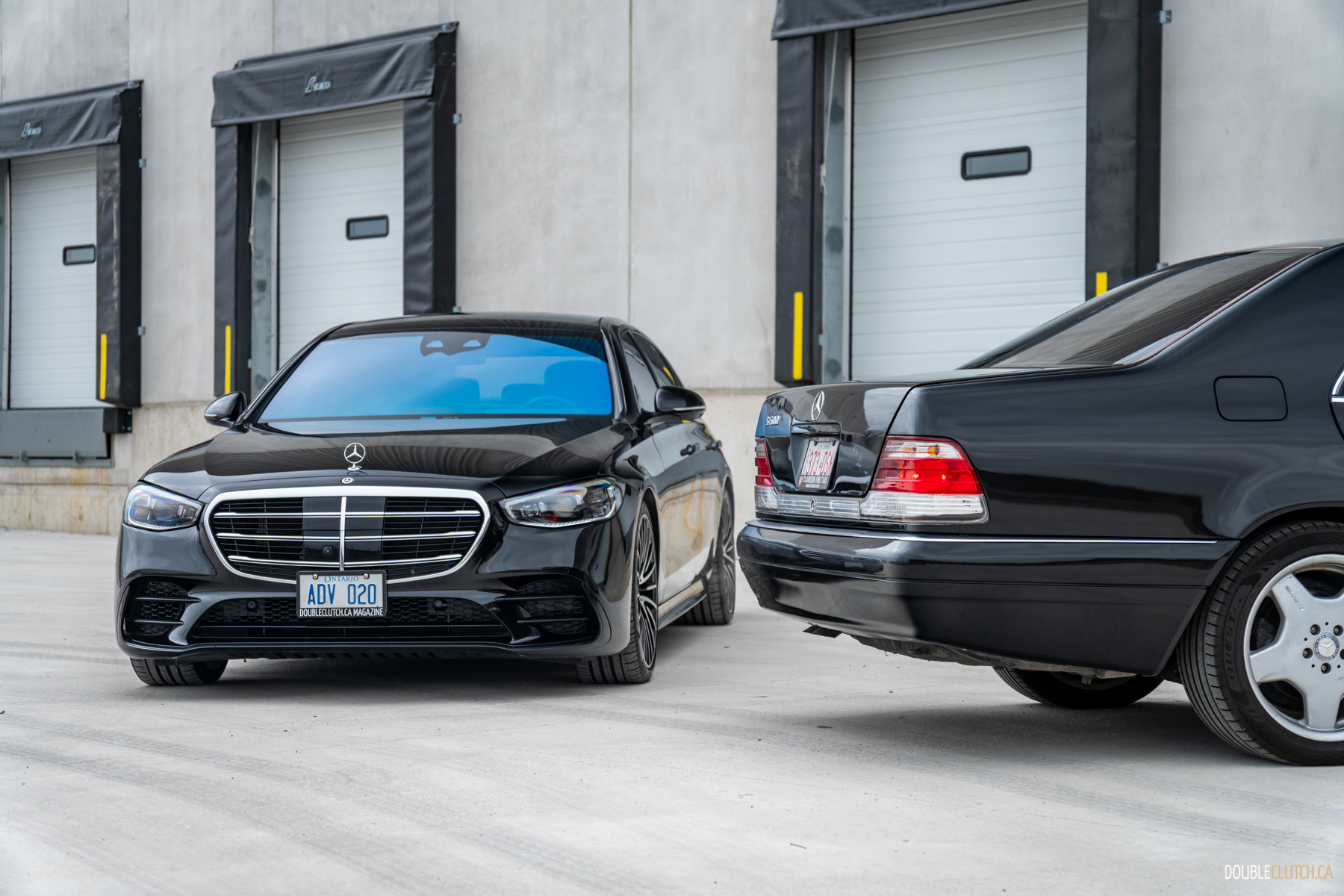
This was Mercedes’ Icarus moment. The imperiousness that defined this car scorched them, and they began to fall.
In the wake of the enormously expensive W140, Benzes somewhat infamously began ignoring their old adage of being “built to a standard, not a cost.” This represented the end of the overbuilt and over-engineered Mercedes, with the cars that followed getting knocked for feeling lesser than their predecessors, having their own laundry list of issues as a result of being, dare I say, cheap. To that end, when Mercedes resurrected Maybach badge in the early 2000s, they didn’t base that new ultra-luxury sedan on the W220, but instead polished off the bones of the W140 and sent them back into service.
The W140 S-Class isn’t perfect by any stretch. Mercedes’ wings were starting to melt under their burning ego, but for better or worse, it’s peak Mercedes. For all its criticism on launch and notorious difficulties, many moons on, this 1999 Mercedes-Benz S 500 still looks and feels like almost nothing else on the road, standing proudly as a testament to the audacity of a lost era of engineering, a cautionary tale of arrogance, and an auspicious beacon for others to follow. What a car.

